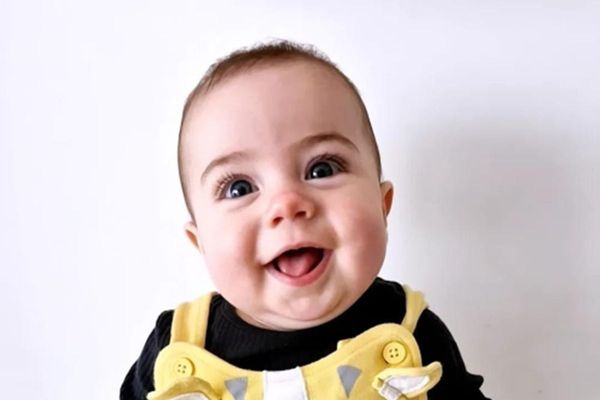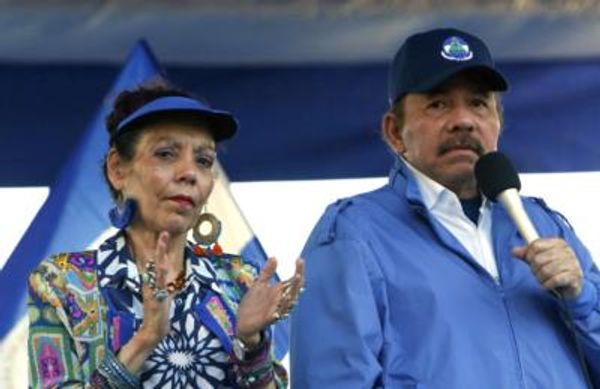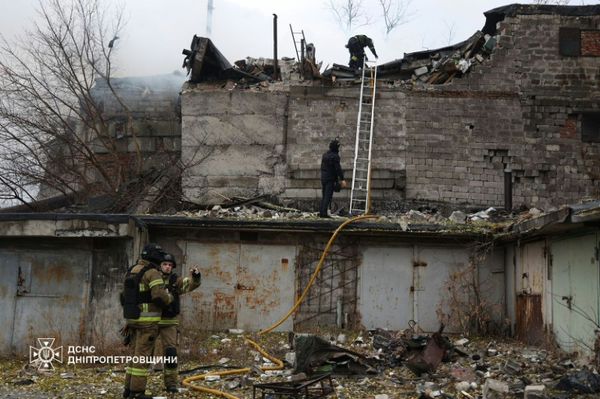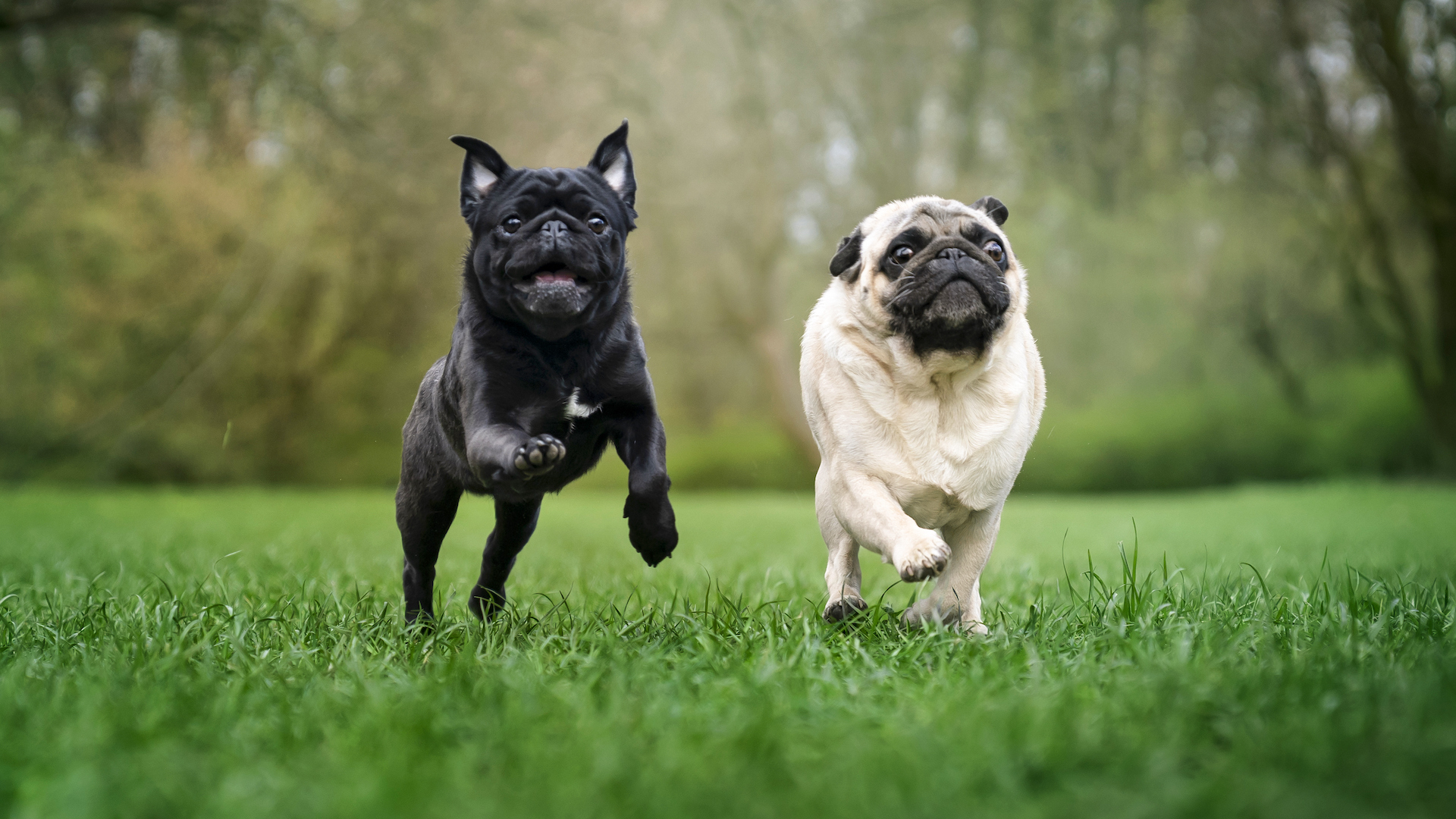
Cuteness, sadly, comes at a price. Animals – especially dogs – with adorably smooshy faces, button noses, and large endearing eyes, have become increasingly fashionable. However, these flat faces – the official term being brachycephalic – usually mean that the animal’s breathing system is significantly compromised as it has to pump around the same amount of air in a relatively smaller space compared to dogs with longer muzzles.
The official condition is called brachycephalic obstructive airway syndrome (BOAS), which will limit the dog’s ability to exercise normally, they will pant excessively, breathe noisily, and have a limited tolerance to hot weather. So having one of the best cooling mats for dogs is essential.
In Greek, brachy means shortened, and cephalic pertains to the head, so the simple definition is that the dog has a short skull in ratio to its width. The nose is typically pushed in, meaning the nostrils are small and narrow. This all alters the soft tissue structures, to the extent that the soft palate has no room and will hang down into the throat, obstructing the airways and causing the animal to snuffle and snore. Essentially its breathing is compromised.
There are 24 dog breeds with brachycephalic conformation, with some breeds much more severely affected than others. Typically, the flatter the face, the more significant the health problems. But it’s a popular look: in the top 20 US dog breeds of 2023, seven are considered brachycephalic, with French bulldogs heading the list.
And it’s not just dogs that are affected; cats and rabbits can also have shortened head shapes with repercussions on their health. Let’s take a look at some of the brachycephalic animal breeds.
32 brachycephalic animal breeds
1. Pug
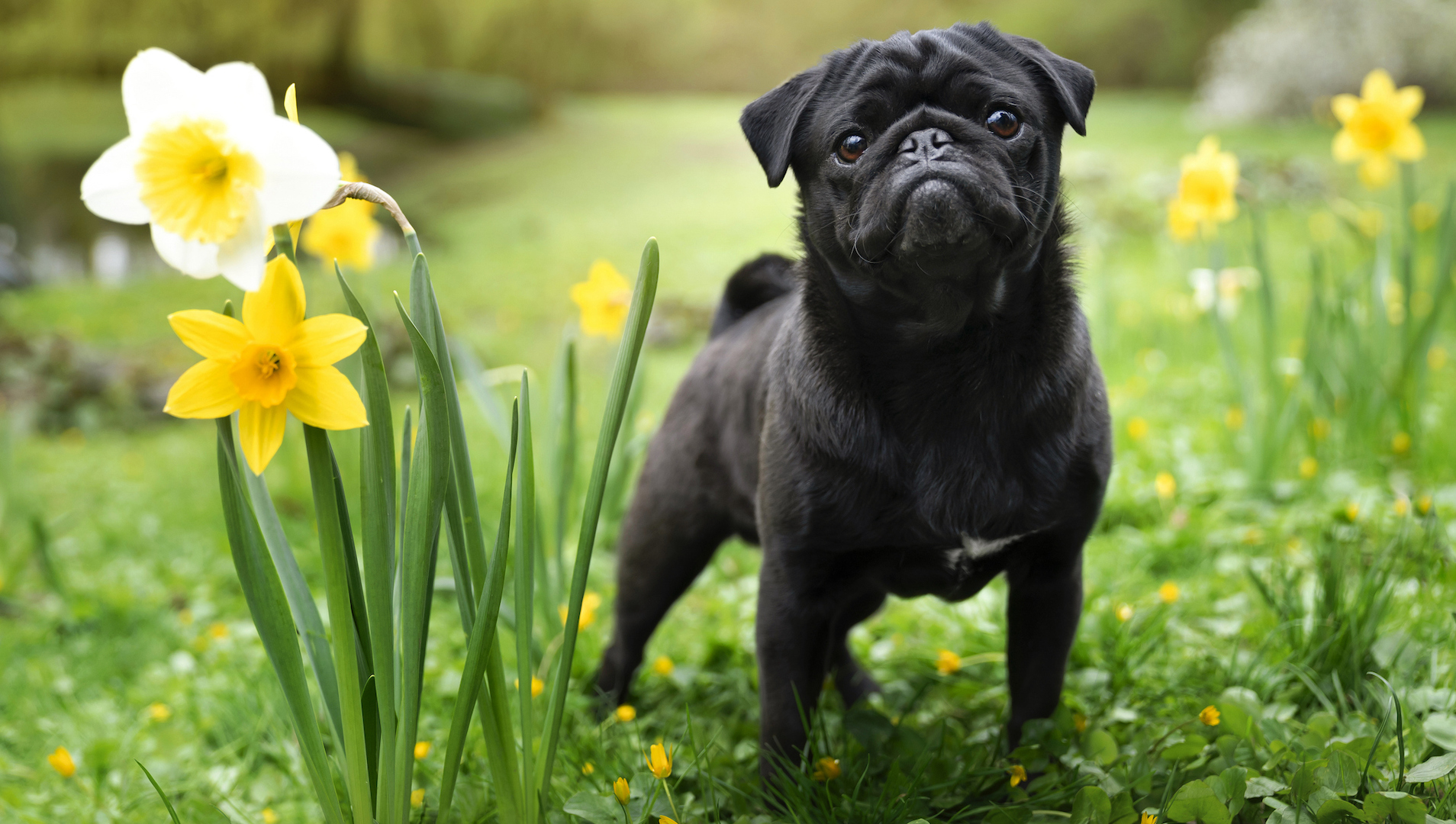
Charming, outgoing, and lovable, pugs are happy and sociable companions with a distinctive appearance.
Pushed-in noses, flat faces, and adorable wrinkles are the hallmarks of this popular breed, but this cute appearance makes them extremely likely to suffer from BOAS (brachycephalic obstructive airway syndrome) and other related disorders.
A telltale sign is that they often snuffle like little pigs – again, this can seem charming, except for the fact that it is indicative of their struggle to breathe normally. However, this is not a breed that loves to exercise, they are canine couch potatoes who love nothing more than hanging out with their favorite human and make a great apartment pet.
2. Brussels Griffon
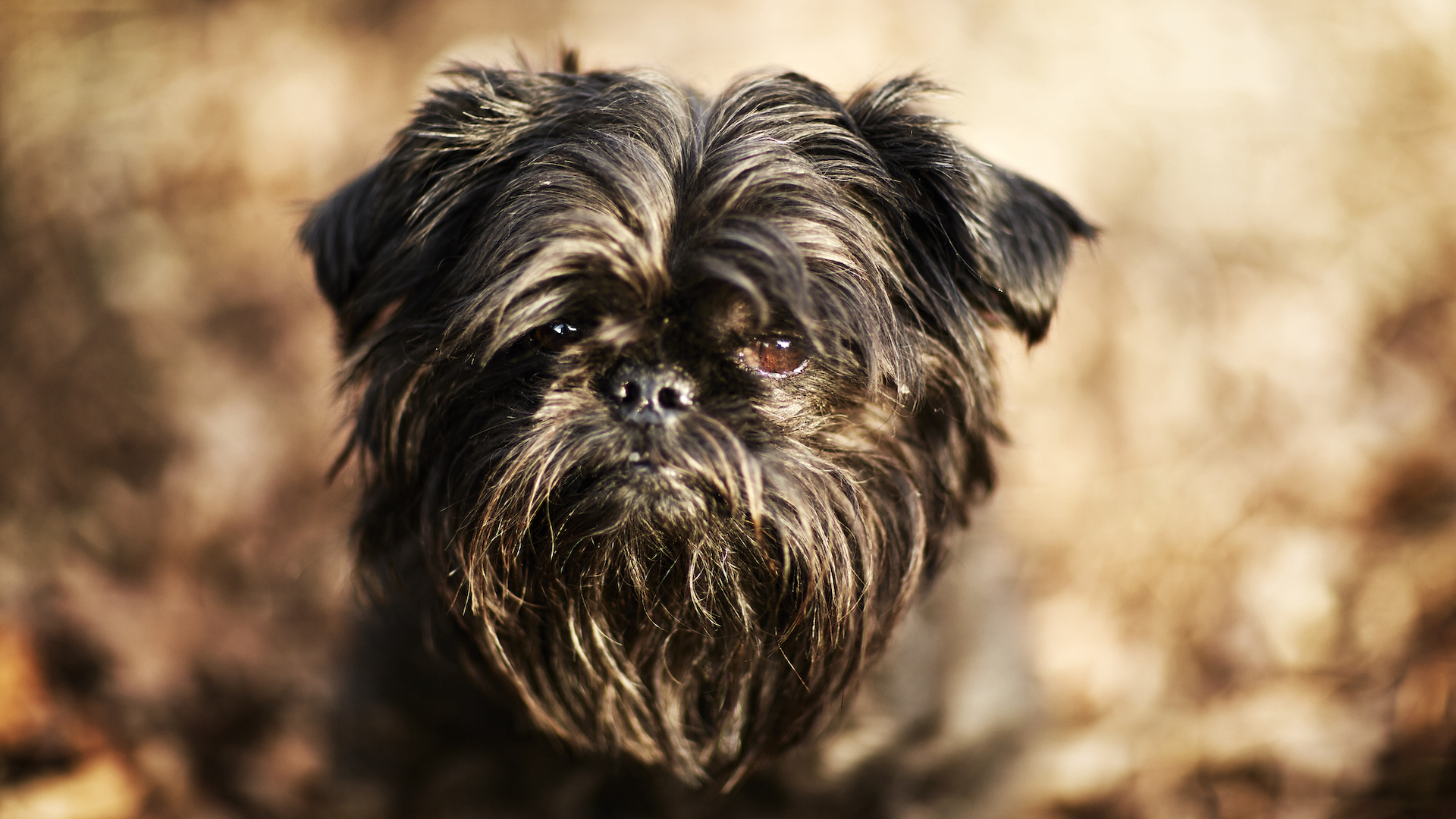
The characteristic short snout and flat-faced appearance are typical traits of the brachycephalic breed. This makes them more likely to snore, as well as finding exercise in hot, humid weather hard work.
According to a 2021 study on Griffon breeds by the Veterinary Record Open, nasal hyperkeratosis – a skin condition that causes a dog’s skin in the nose to thicken – is a common development in Brussels Griffons when they are only young adults, similar to other brachycephalic breeds.
3. Bulldog
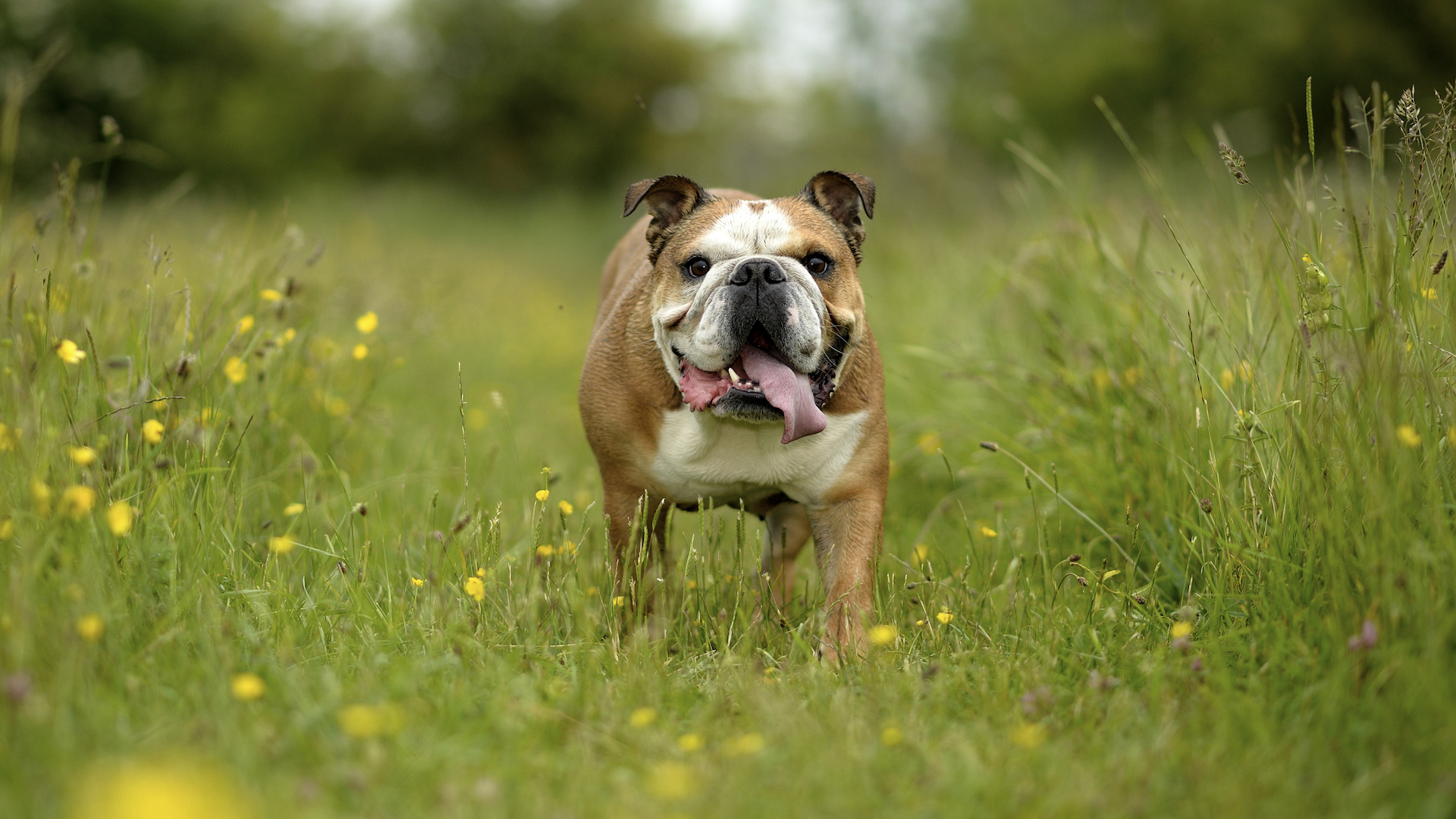
This medium-sized mastiff-type dog is characterized by its large head and thick folds of skin, which give it the “sour mug” look. Known for their courage, loyalty, and tenacity, bulldogs are defined by their shortened upper jaw and nose, an extreme brachycephalic head shape which severely affects the respiratory system and prevents them from exercising in a normal canine manner. BOAS is almost inevitable in this breed.
4. French bulldog
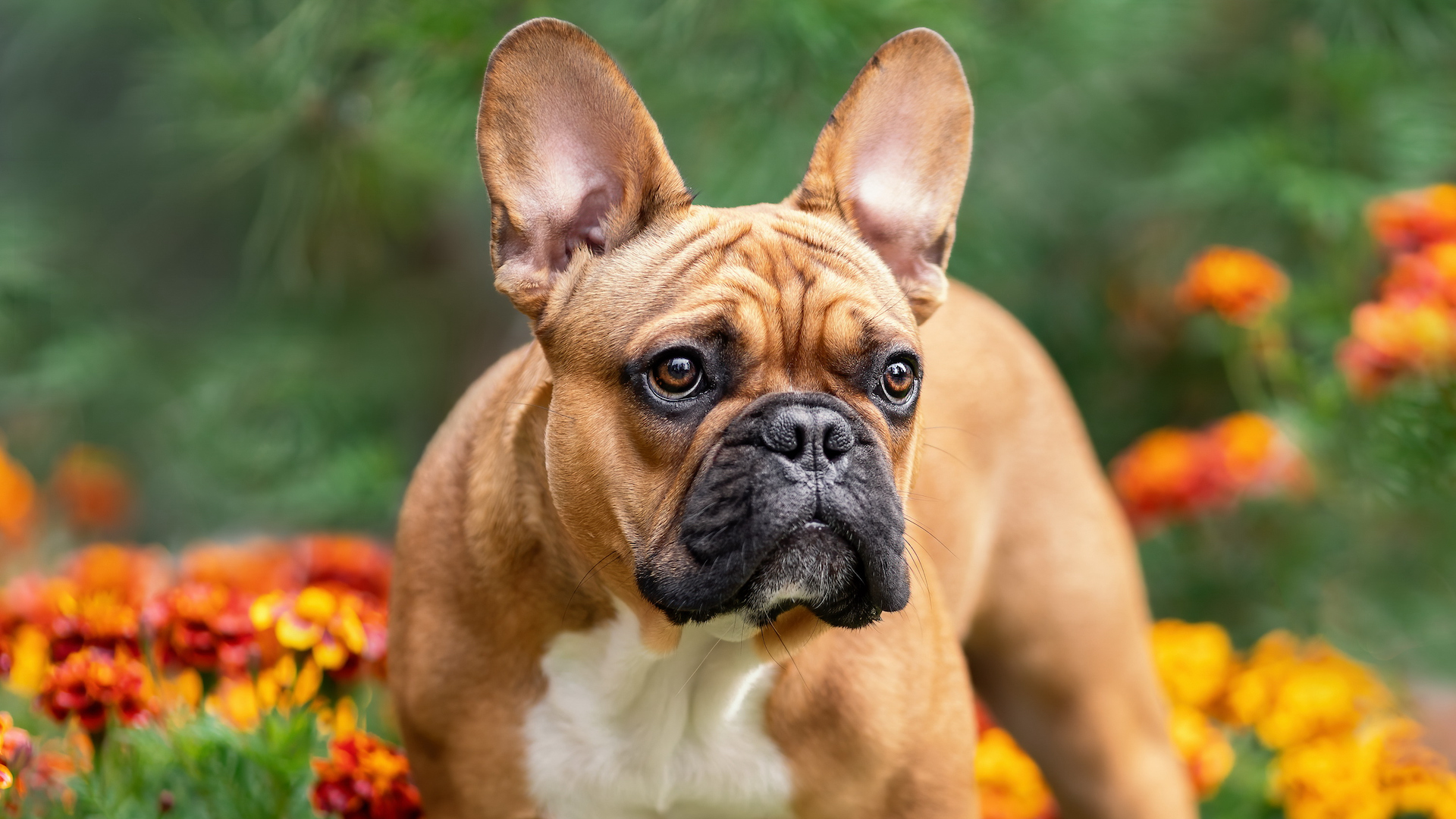
The most popular dog breed in the US, the companionable French bulldog has extreme brachycephalic conformation, with a pronounced underbite and shortened facial features. This “cute” snub nose can sadly cause chronic respiratory distress, which is very common in this breed. Despite these shortcomings in their health, Frenchies are undeniably adorable, playful and photogenic.
5. Boston Terrier
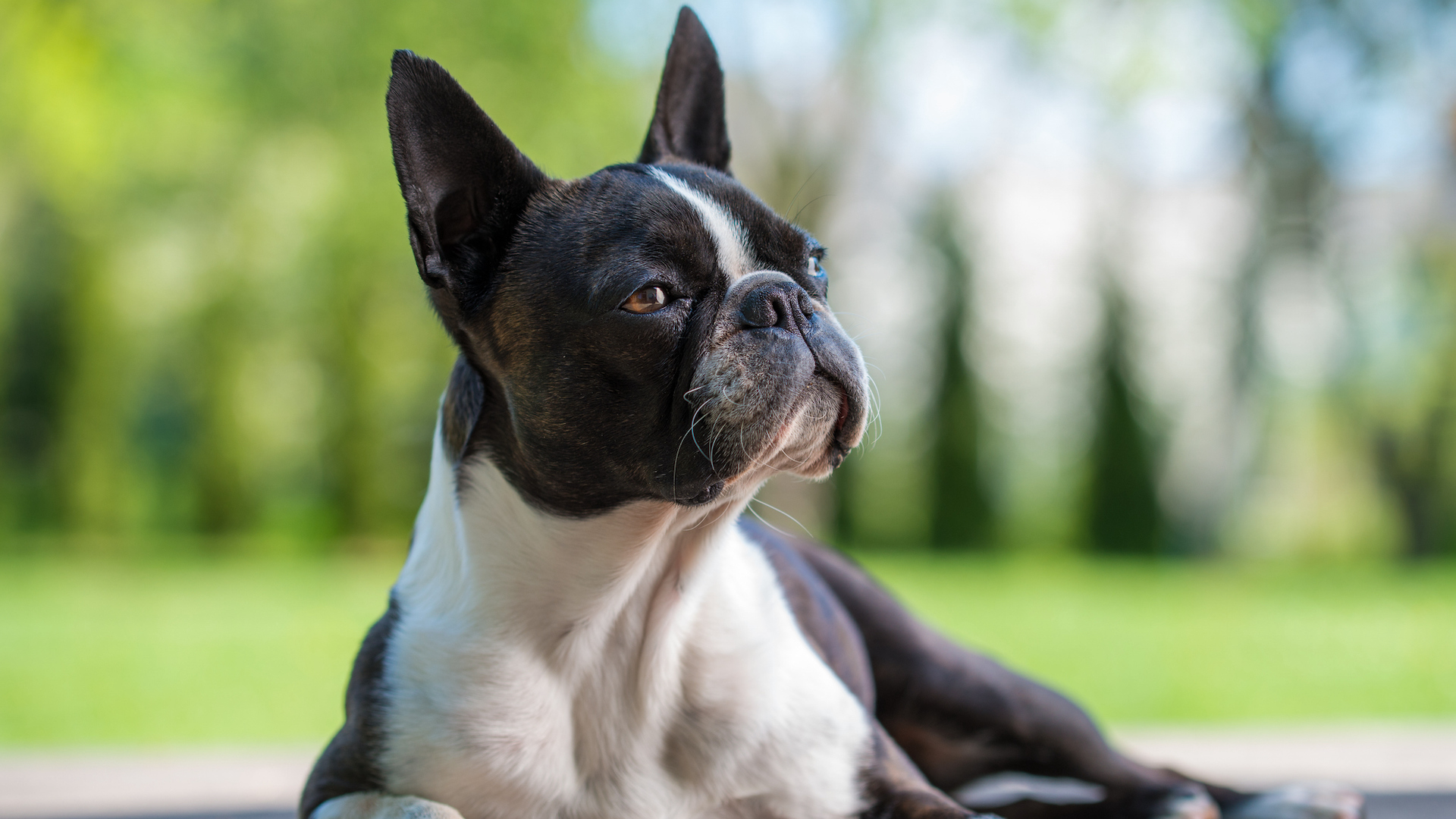
This “American gentleman” of a dog is compact and smart, with tuxedo-style markings that make it instantly appealing. They are small and spunky, with oodles of character. However, like other brachycephalic breeds, the Boston Terrier’s short nose and flat face means it has a long palate and narrow airway, which can cause breathing problems and leave them susceptible to a range of related health issues.
6. Boxer
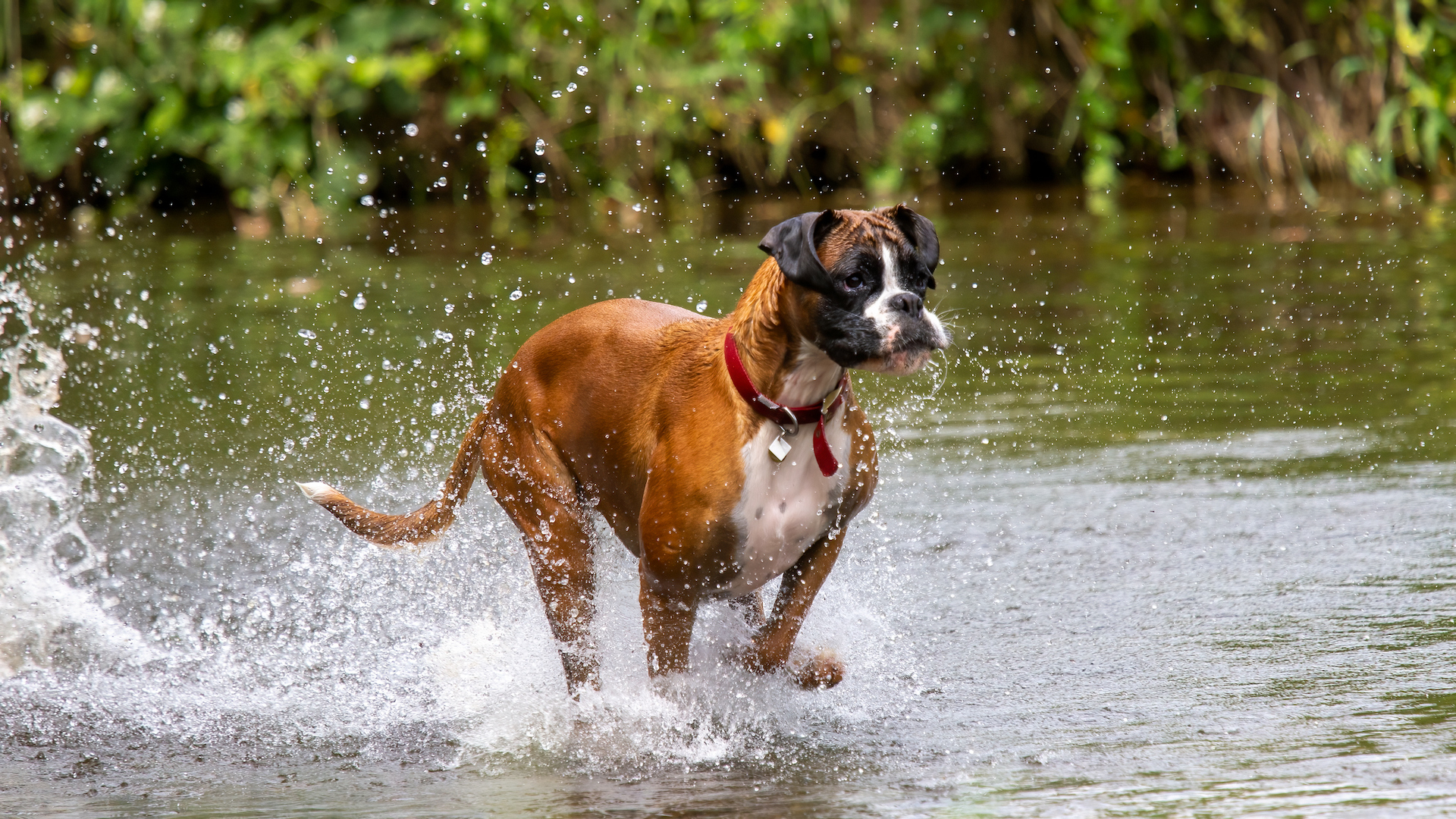
A German breed with a patient and protective nature, which is known for being a super playmate for kids. They are gentle and loving, despite their muscular power but these aren't the most important things to know about boxers.
You should know that the distinctive short and wide head of the boxer, with its square muzzle and snub nose, is likely to predispose the breed to snoring and breathing problems. However, boxers are considered moderately rather than severely brachycephalic.
7. Cane Corso
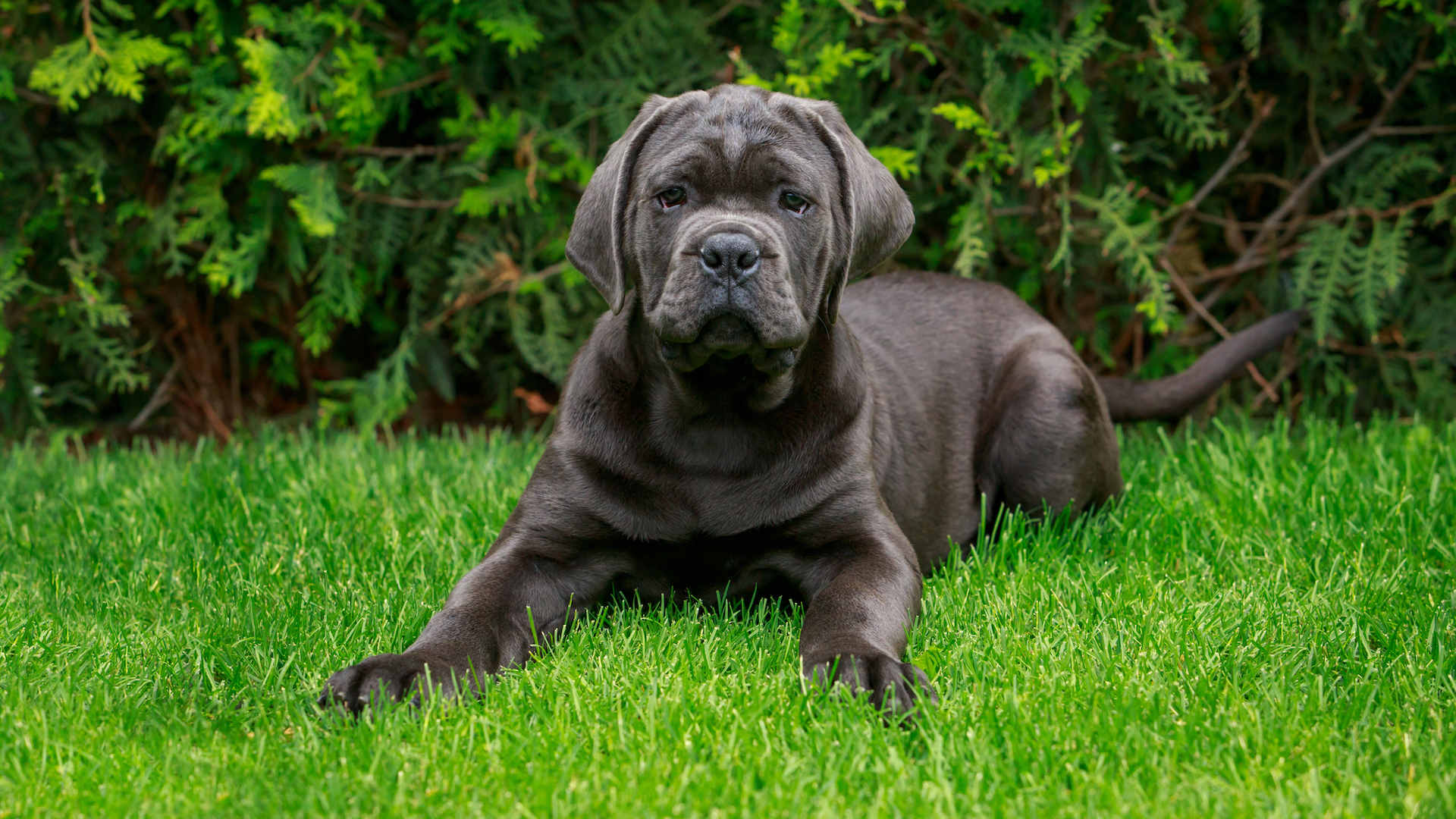
This imposing and noble-looking dog is the ultimate protector, with a heritage that dates back to Ancient Rome, where they probably descended from war dogs. Essentially an Italian mastiff, these large, muscular dogs are typically used as companion or guard dogs, and also to protect livestock.
Less severely brachycephalic than some on this list, the Cane Corso does have a relatively flat face and shortened muzzle that can predispose it to breathing problems. However, other mastiff-type dogs tend to have more pushed-in faces, but the Cane Corso is still considered a brachycephalic breed.
8. Chow chow
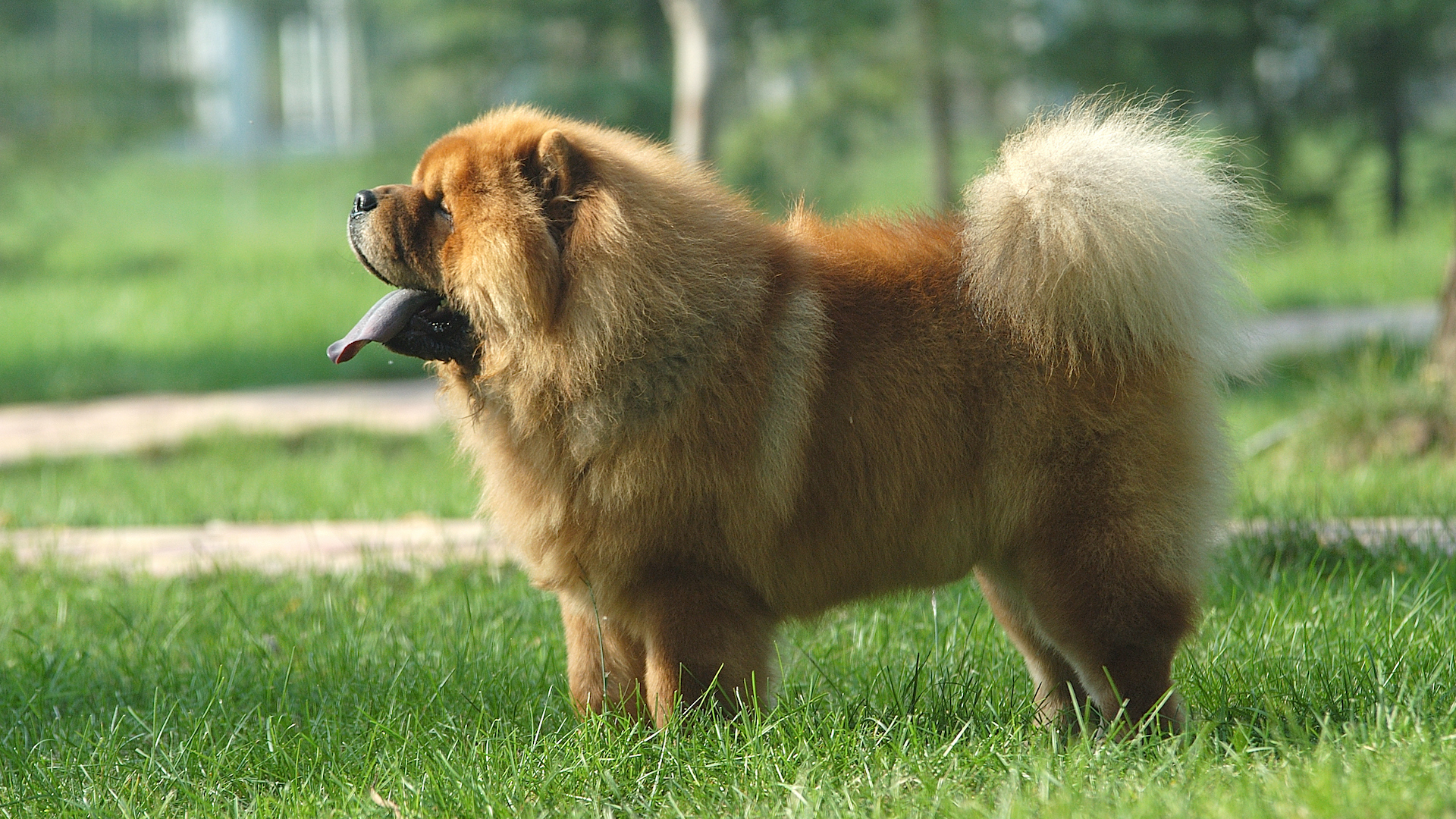
Chow chows are a spitz type of dog that hails from China – but while their ears are pointy, their muzzles tend to be blunt. Other distinctive traits include their lion’s mane ruff and a blue-black tongue.
They are listed as a brachycephalic breed due to their shortened skull shape, but they are less likely than most to suffer from respiratory problems and are therefore considered low-risk. If they are overweight, anxious, or elderly, then breathing difficulties are more prevalent.
9. Dogue de Bordeaux
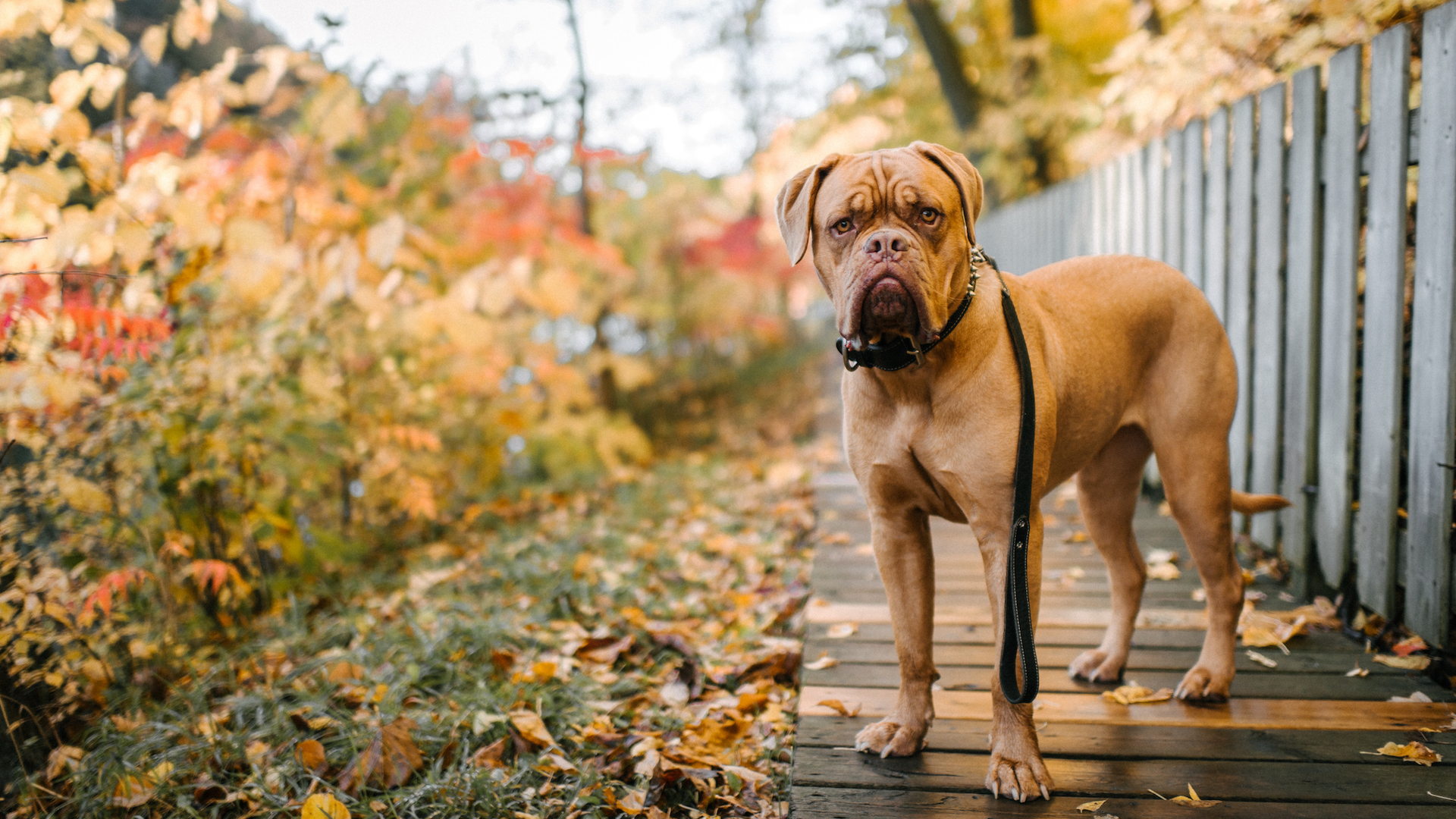
This immensely powerful, ancient French breed of mastiff type features a rich, fawn-colored coat and a propensity for loyal guardianship.
Although their enormous heads are the largest in the canine kingdom, they are also short, which means their breathing passages are undersized and flattened – leading to breathing problems characteristic of brachycephalic breeds. The Dogue de Bordeaux is also known for excessive drooling which can add to the notion that it is struggling to breathe freely.
10. Lhasa apso
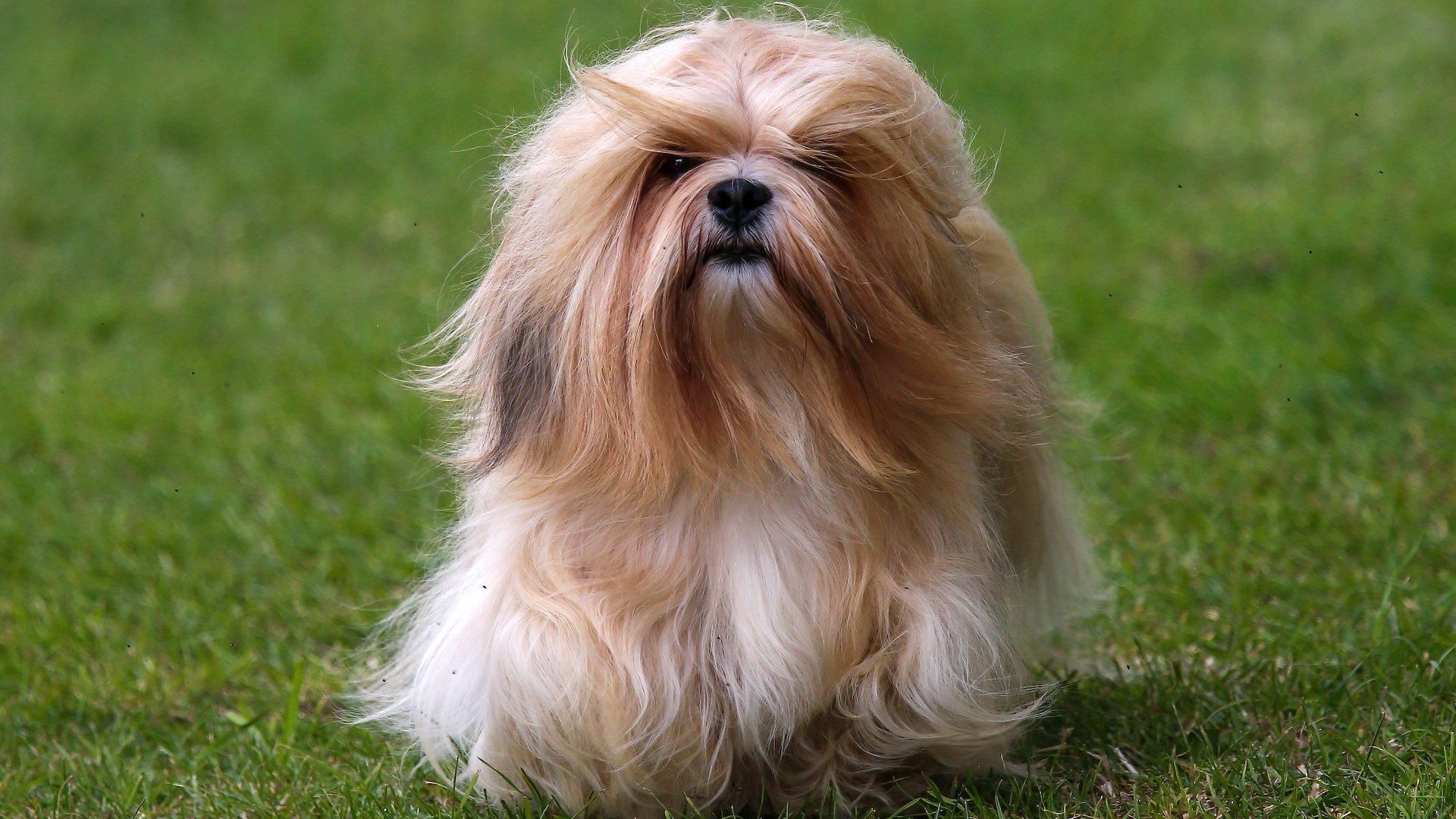
The delicate little face of this small breed – which started out life as a temple dog in its native Tibet – means that it has a shorter muzzle, compromising the soft palate and airway. Lhasa Apsos’ faces vary in the degree of facial flatness – the less the nose looks pushed in, the healthier the dog is likely to be.
11. Pekingese
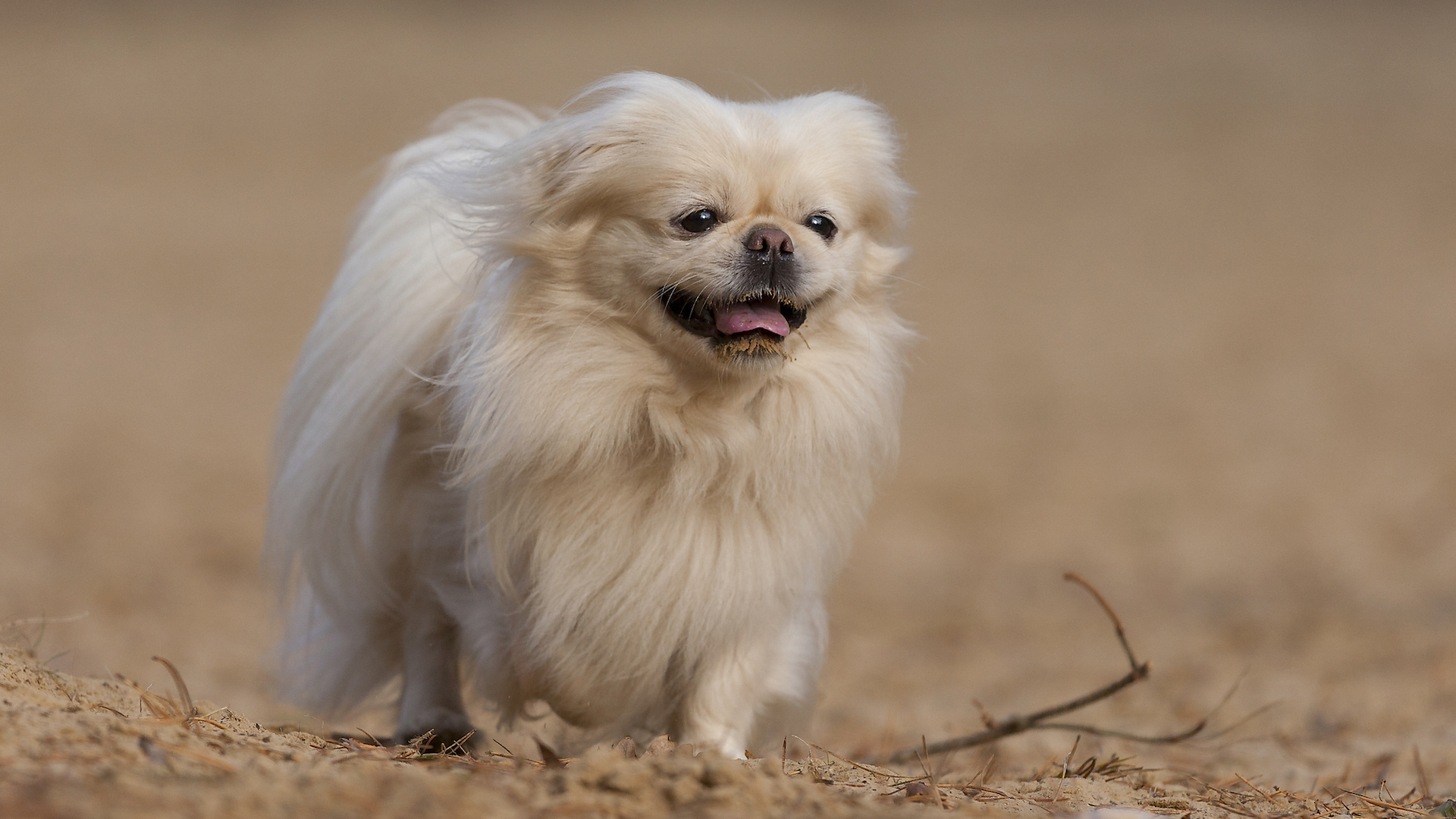
A compact toy dog that was prized as a companion in the palaces of ancient China. They have a cheerful rolling gait, and while diminutive, they are true canine aristocrats with all the confidence of the emperors who owned them.
Prone to snoring and noisy breathing, the Pekingese has an extremely brachycephalic head shape, with almost no muzzle at all and large prominent eyes, that are likely to suffer eye problems and irritation.
12. Shih tzu
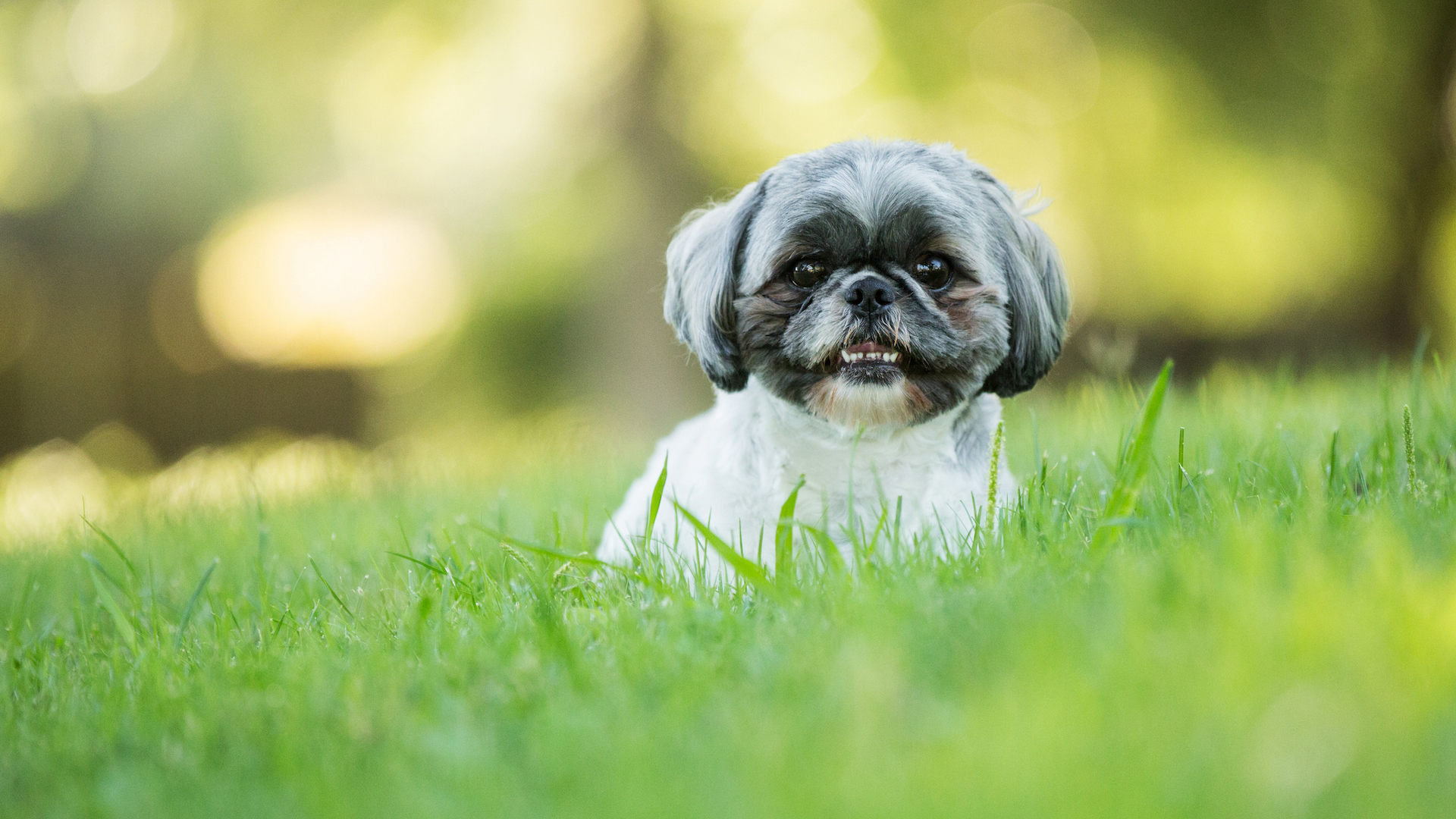
These mini “Lion Dogs” with their beseeching dark eyes are a source of total delight to their owners, and especially children – they make ideal playmates. Like the Pekingese, this little dog is bred to live in palaces, but they’ll be just as happy on your lap.
The extremely brachycephalic head shape of the Shih Tzu – flat faces, excessive facial wrinkles, and shallow eye sockets – is linked to both ocular and respiratory problems.
13. American Cocker Spaniel
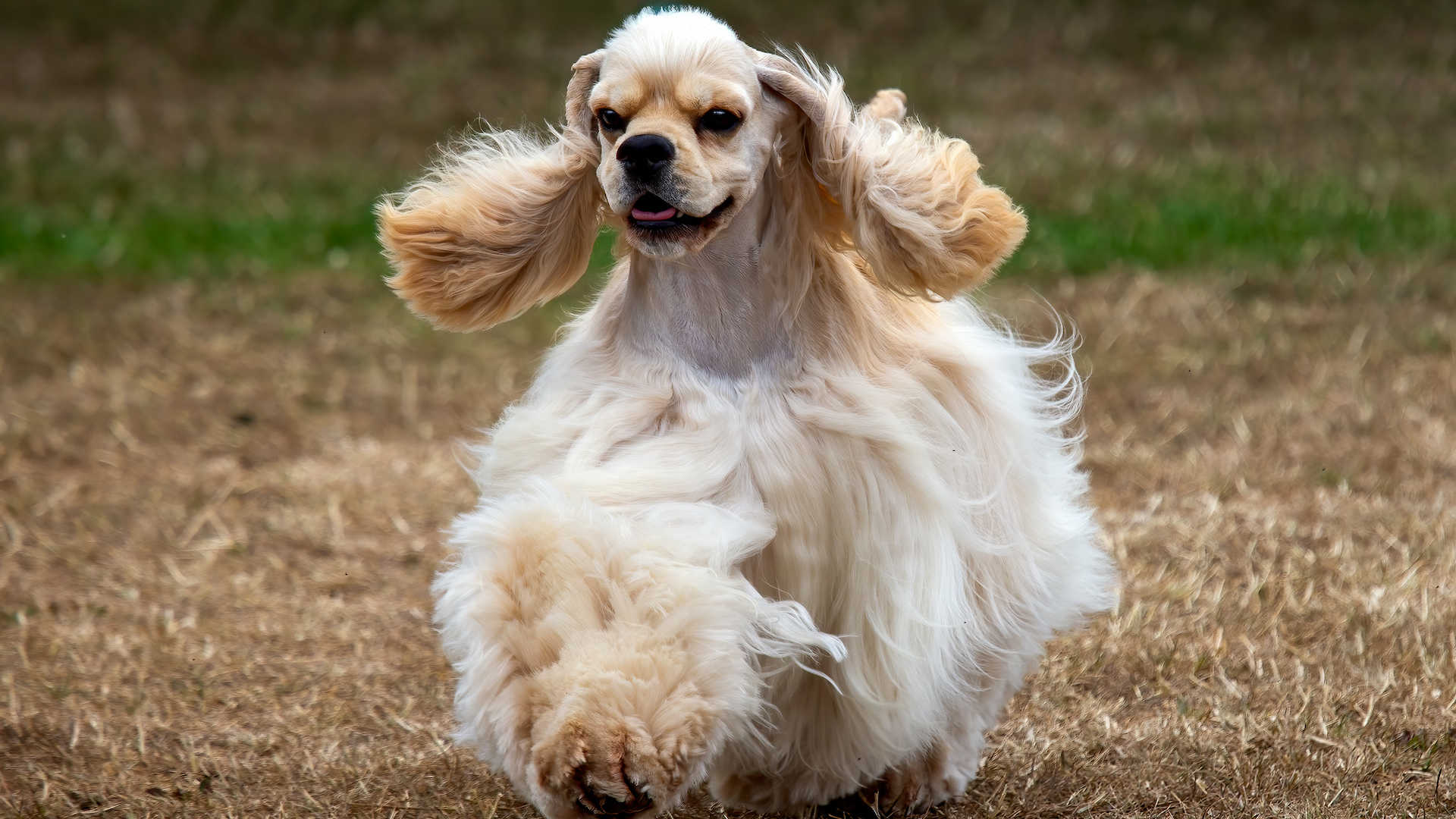
While English Cocker Spaniels are not a brachycephalic breed, some of their American cousins are. A hugely popular breed, being both sporty and extremely pretty with their large eyes, long ears, and silky coats (if you’re up for the grooming demands).
They have a much sharper stop than the English cocker, which can lead to breathing problems. Not all American cockers are brachycephalic, however, with some having a mesaticephalic head shape. This means they have a medium head rather than shortened one, that is, the length and width are equal.
14. Tibetan Spaniel
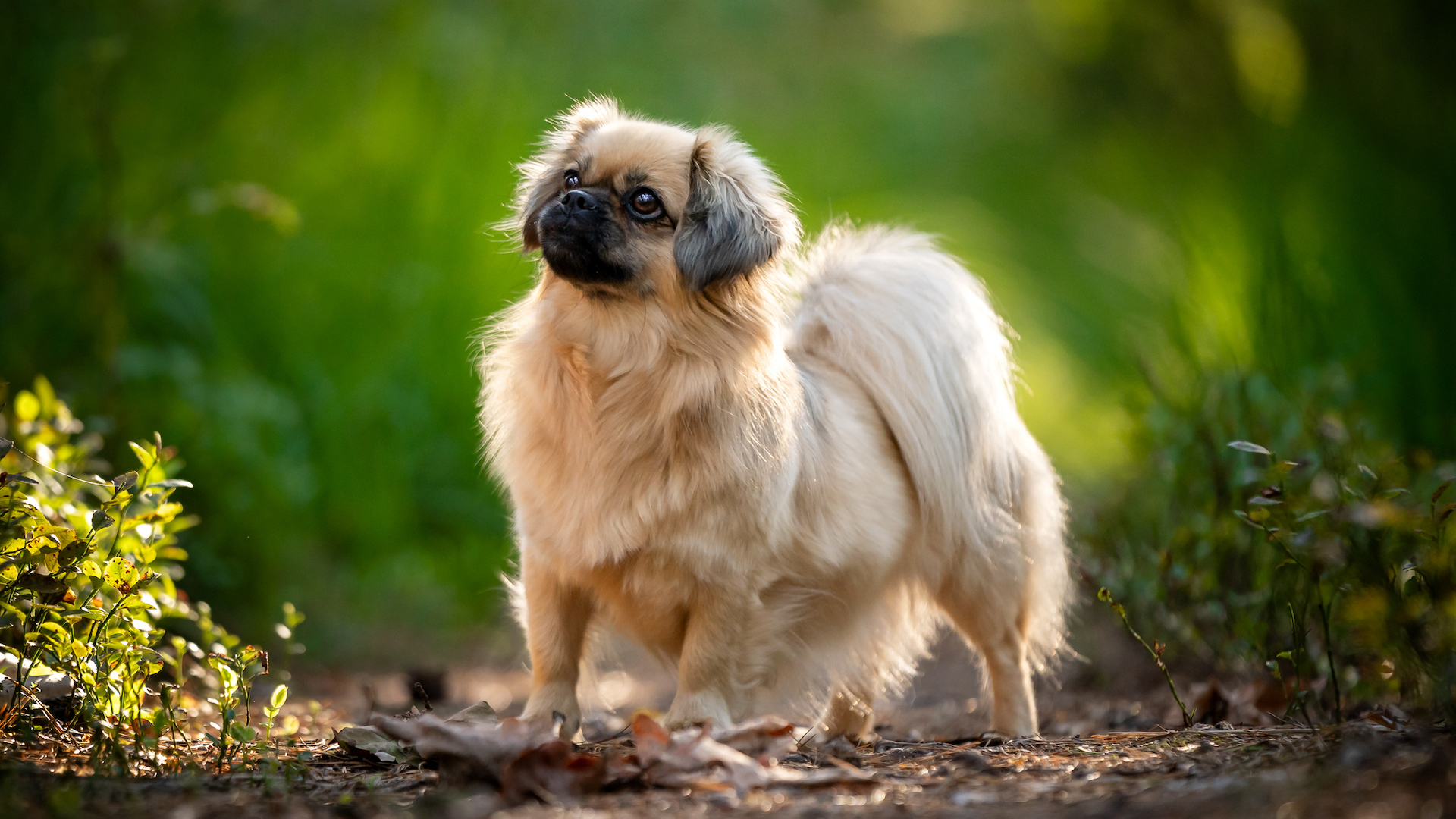
Tibetan Spaniels date back thousands of years to the days when these little dogs used to raise the alarm for Buddhist monks in Tibetan monasteries. Less spaniel, and more mini lion with their silky ruffs, these adorable companion dogs love to form a tight bond with their humans.
This is an adorably energetic and playful breed, but their short noses mean that there is a lot of tissue to fit into their nose and throat, resulting in the soft palate hanging down into the airway. Their nostrils are often small, too, meaning that they have narrow, obstructed breathing passages.
15. Chihuahua
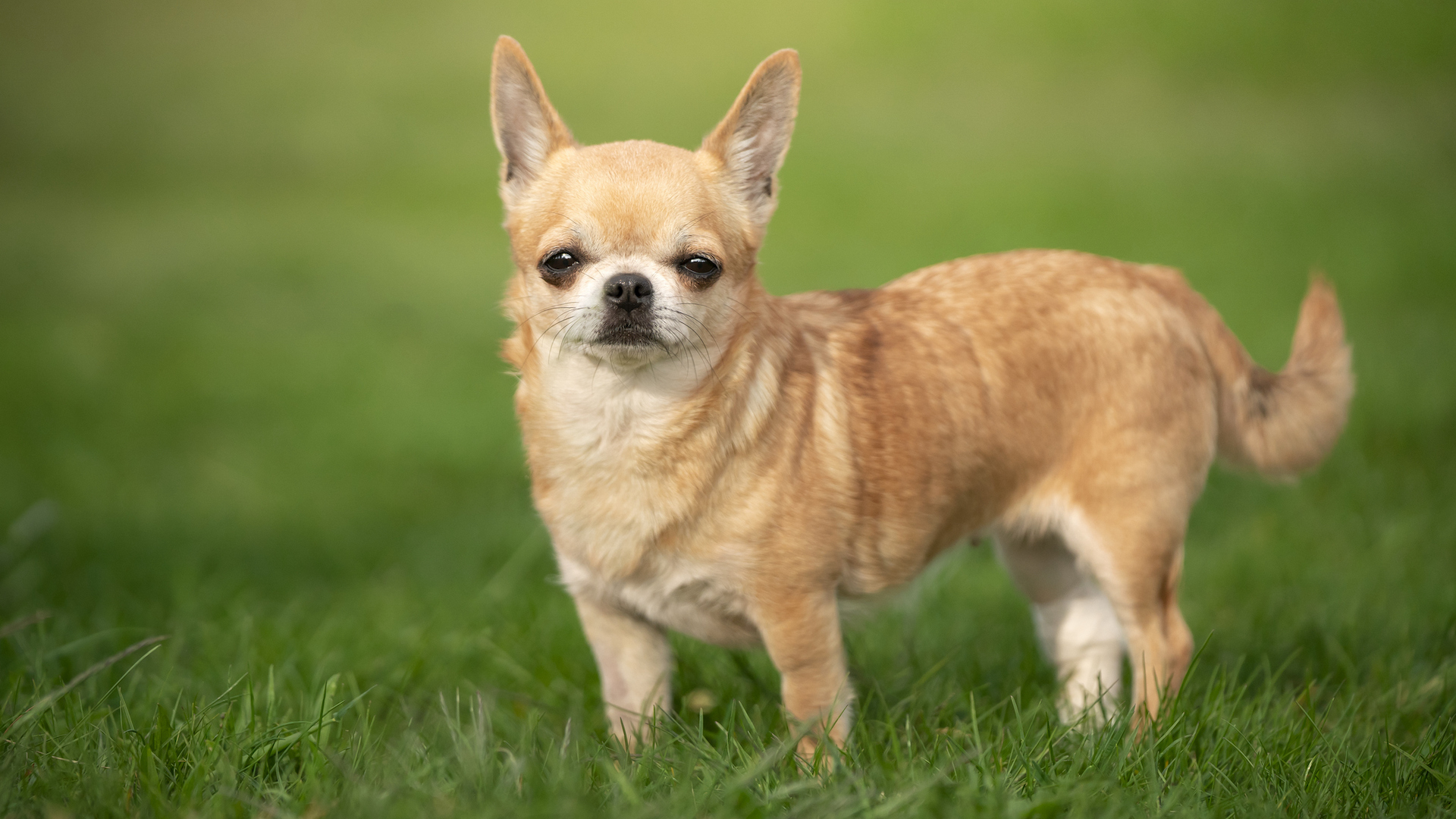
The tiny pooch with a massive personality. Chihuahuas combine elegant grace with big-dog attitude, charm with sass. Their diminutive size makes them ideal for city life and apartment living – though they won‘t say no to a charge around the countryside!
The cute little face of the Chihuahua makes them a brachycephalic breed, however the degree to which their breathing is compromised varies significantly from one individual dog to another. They are not as significantly affected as other snub-nosed breeds.
16. Japanese Chin

A toy companion dog with a feline character. They are known for being intelligent, exotic, and a lap dog par excellence.
The smushy face of the adorable Japanese Chin had its disadvantages, as it is firmly in the extreme brachycephalic category, meaning breathing problems are likely. These stunning little companion dogs can be quite snuffly due to their compromised airways.
17. Staffordshire Bull Terrier
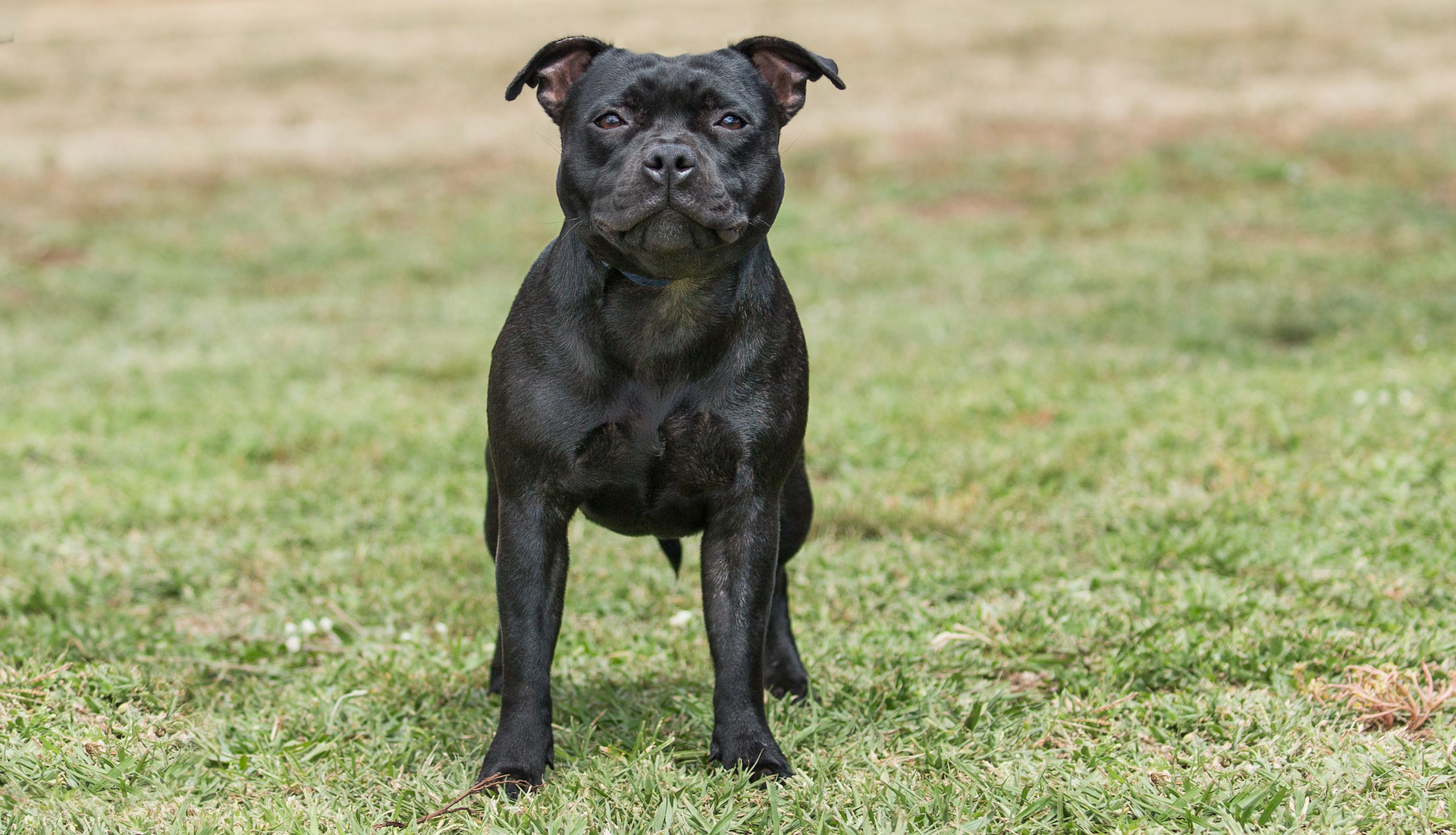
These sturdy yet agile terriers are courageous and tenacious and make a wonderfully playful companion with a particular affinity for kids. They were once the stars of British fighting pits but nowadays tend to have sweet natures as patient, willing pets.
A mildly affected brachycephalic breed, Staffies have wide faces and relatively short snouts but there is considerable variation in the degree and likelihood of breathing difficulties. They might be less heat tolerant than the average dog, but they tend to be at a much lower risk than many other brachycephalic breeds of suffering BOAS.
18. Affenpinscher
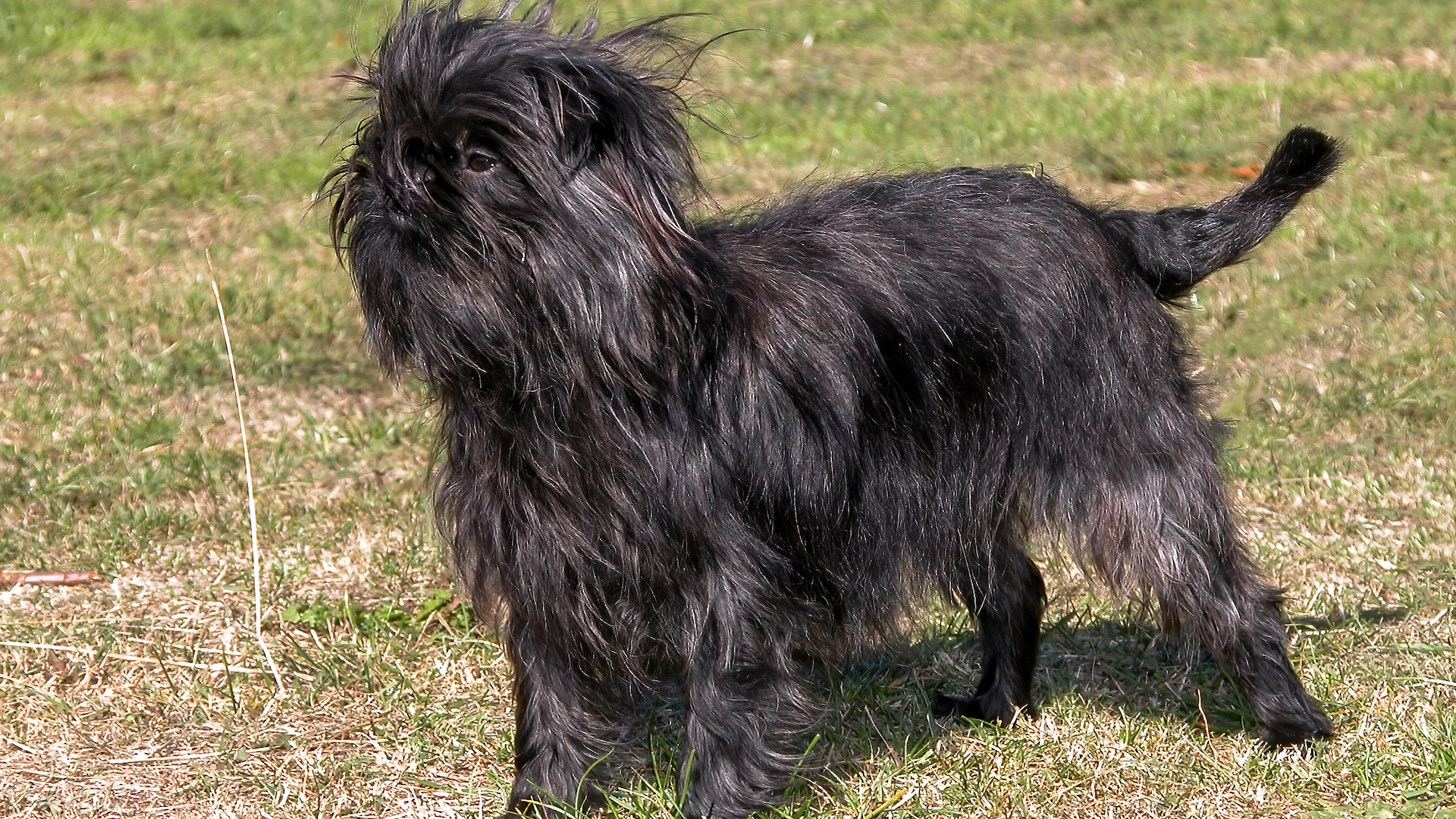
Affenpinscher fans describe these fun little dogs as “comedians”, with their ability to entertain and amuse taking on human characteristics. You don’t own an Affenpinscher, they own you.
While the look of the Affenpinscher, with its monkey-like face and squished-in nose, makes them a brachycephalic breed, they aren’t as susceptible to breathing problems as, for example, the pugs, Frenchies, and bulldogs.
19. Shar-Pei
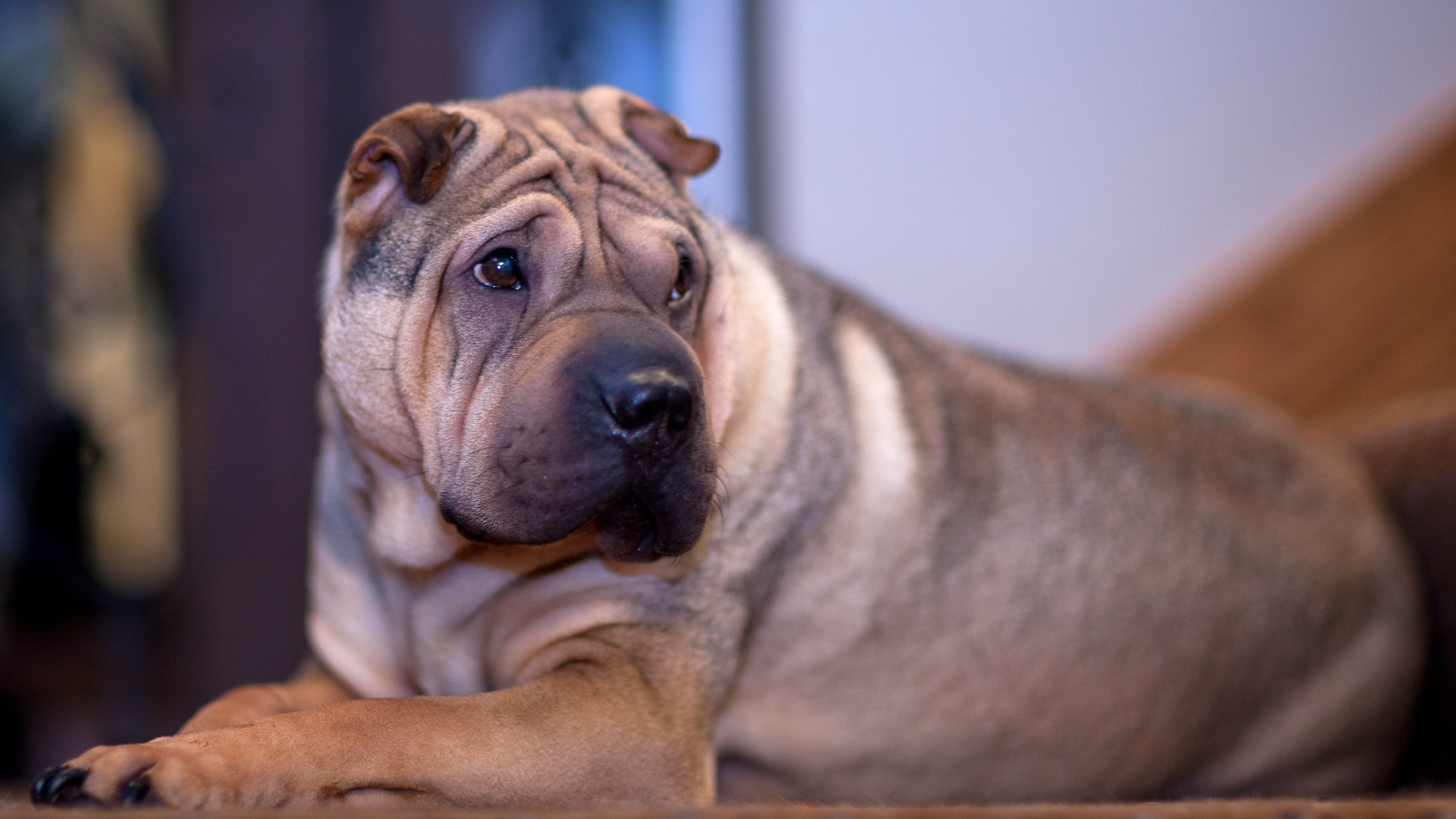
The Shar Pei does not have the flat-faced look of a bulldog or pug, but their noses are short relative to the size of their head, and therefore they are included in the list of brachycephalic breeds. This tends to mean they don’t thrive on very energetic exercise – walking pace is best for this intelligent and regal-looking guardian of a dog. However, they are much less affected than breeds with more severe brachycephalic head conformation.
20. Yorkshire Terrier
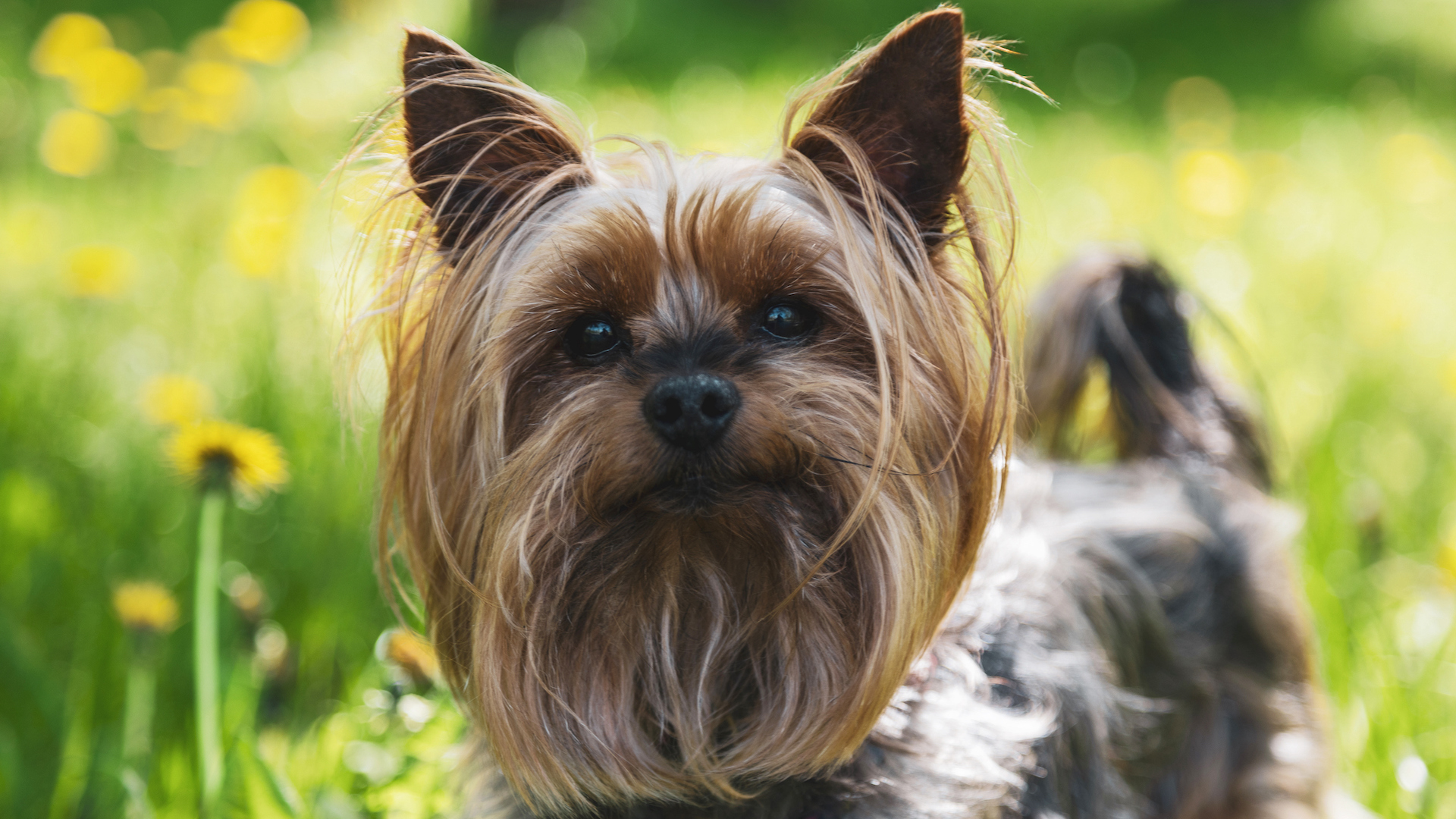
This tiny but feisty terrier with its long curtains of blue-grey hair is considered moderately brachycephalic, as while their faces are fairly flat and they have cute button noses, it is not exaggerated. This in turn means that they are less prone to the disadvantages of brachycephaly, namely breathing difficulties.
Once a favorite of Victorian ladies, this dainty delight is in fact a superb ratter with a tenacious attitude.
21. Bullmastiff
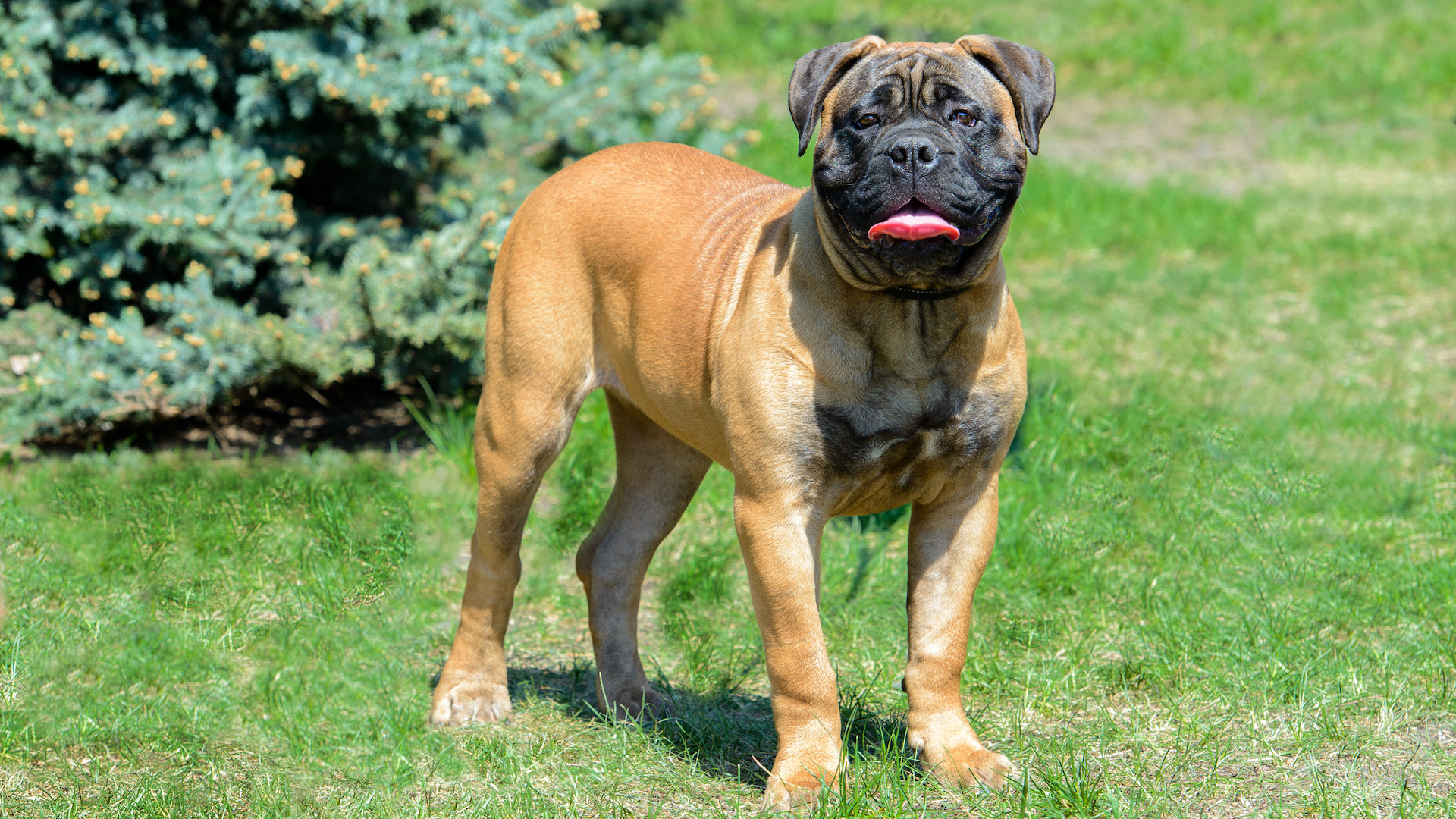
Not all bullmastiffs are brachycephalic – the ideal head conformation according to the American Kennel Club should be “broad and deep”, and a shortened face with a more bulldog look is considered undesirable. An inability to breathe freely would impede them in the job for which they were bred, namely to prowl their properties and prevent poachers from stealing game. Nonetheless, they are usually considered a brachycephalic breed due to the fact that many do have shortened muzzles which affect their breathing.
22. Cavalier King Charles spaniel
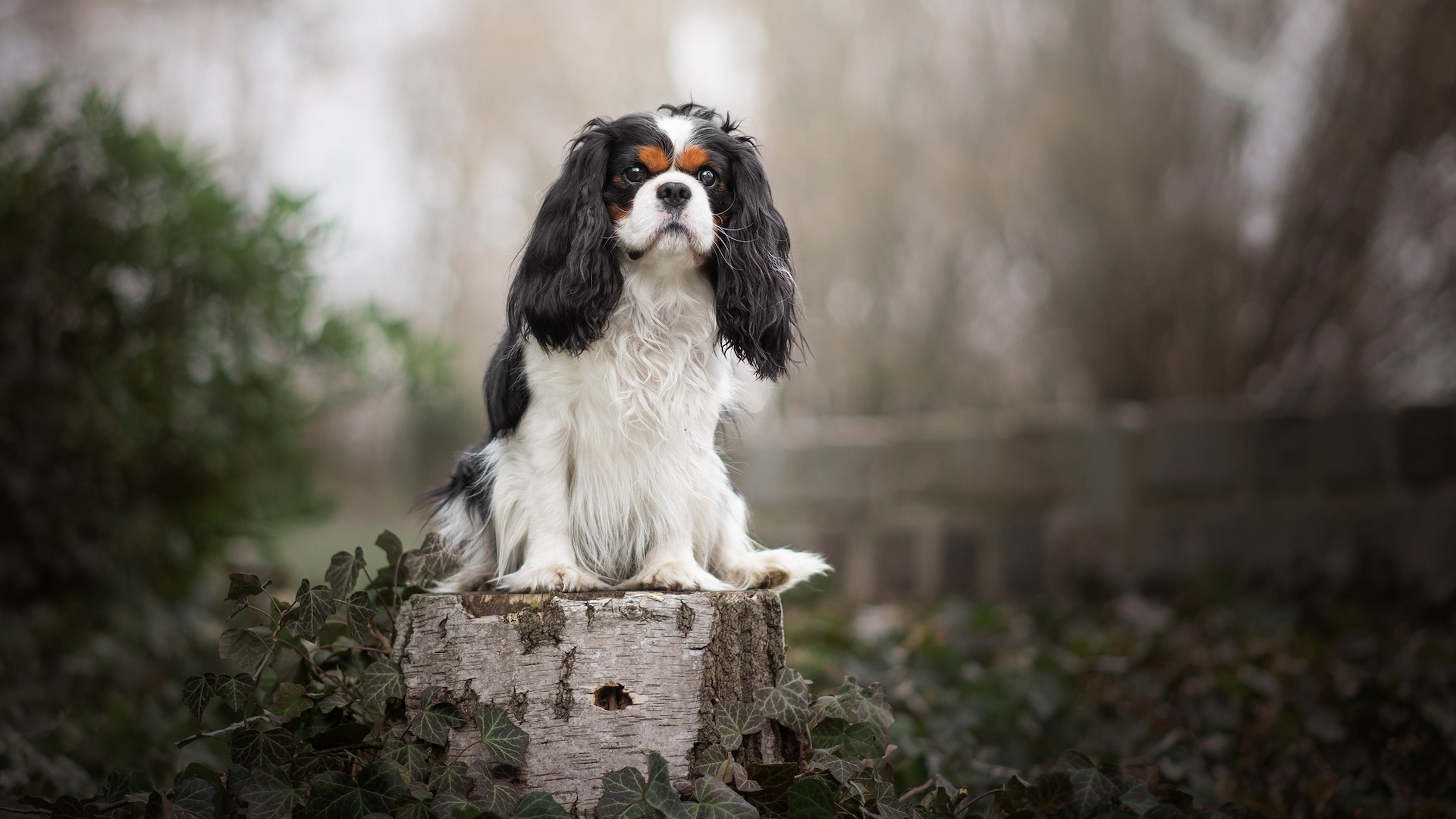
There has been some debate whether these regal spaniels should be listed as a brachycephalic breed given that their muzzles are typically longer than the more obviously flat-faced, snub-nosed dogs such as pugs. However, they have a wide skull which puts their head ratios into the brachycephalic category. This is a breed which has had plenty of evolution of muzzle length through its history, according to the fancies of the era.
23. English Toy spaniel
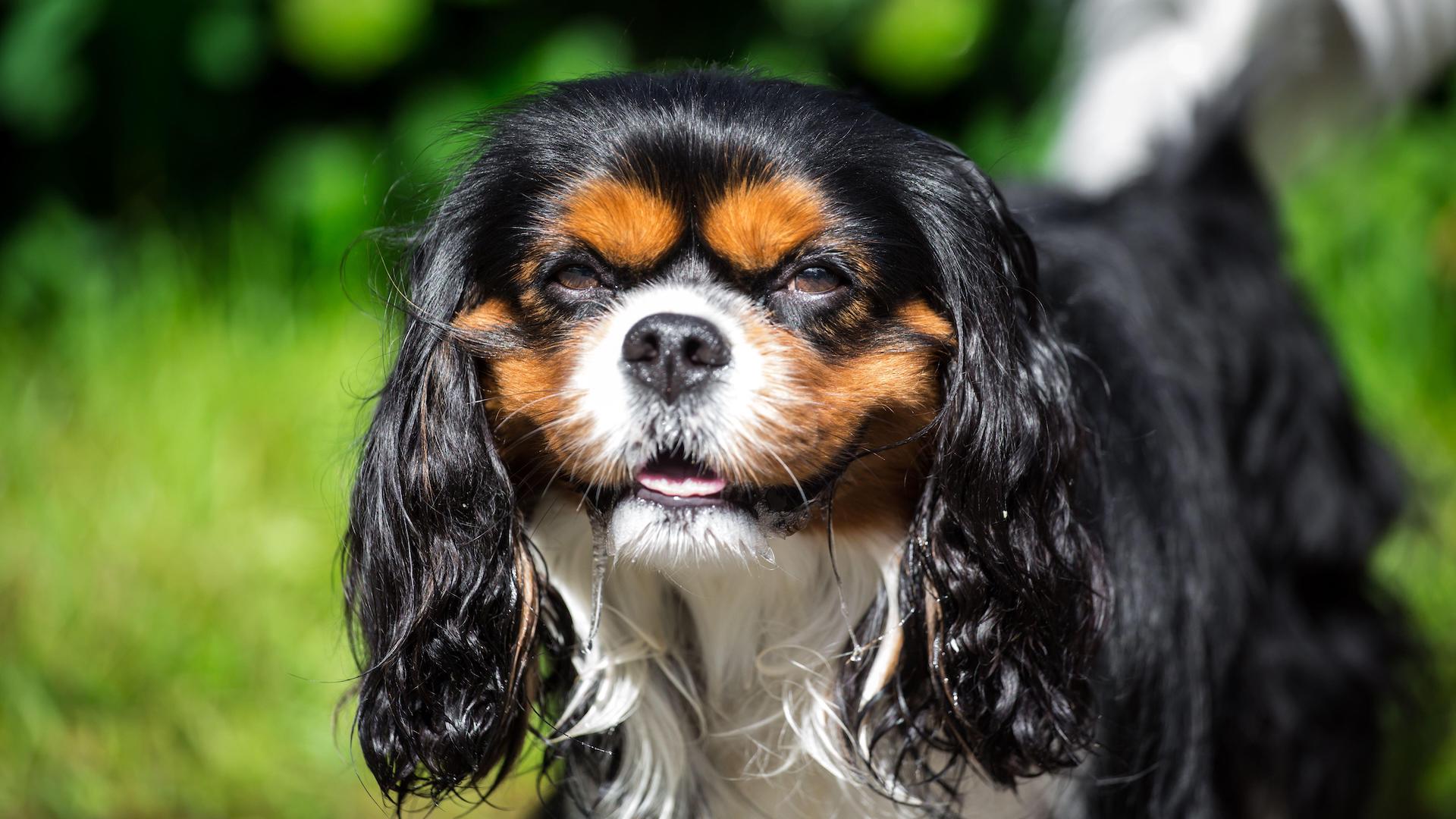
Like many toy dogs, these were developed as a companion to the royals and aristocrats. The result is a merry little dog, with a heightened sense of its own importance.
Part of what makes these delightful little dogs look so sweet is also what gives them brachycephalic status: flat faces, short noses, chubby cheeks, and wide skulls. This inevitably leaves them more prone to health problems stemming from their narrow airways.
24. Persian
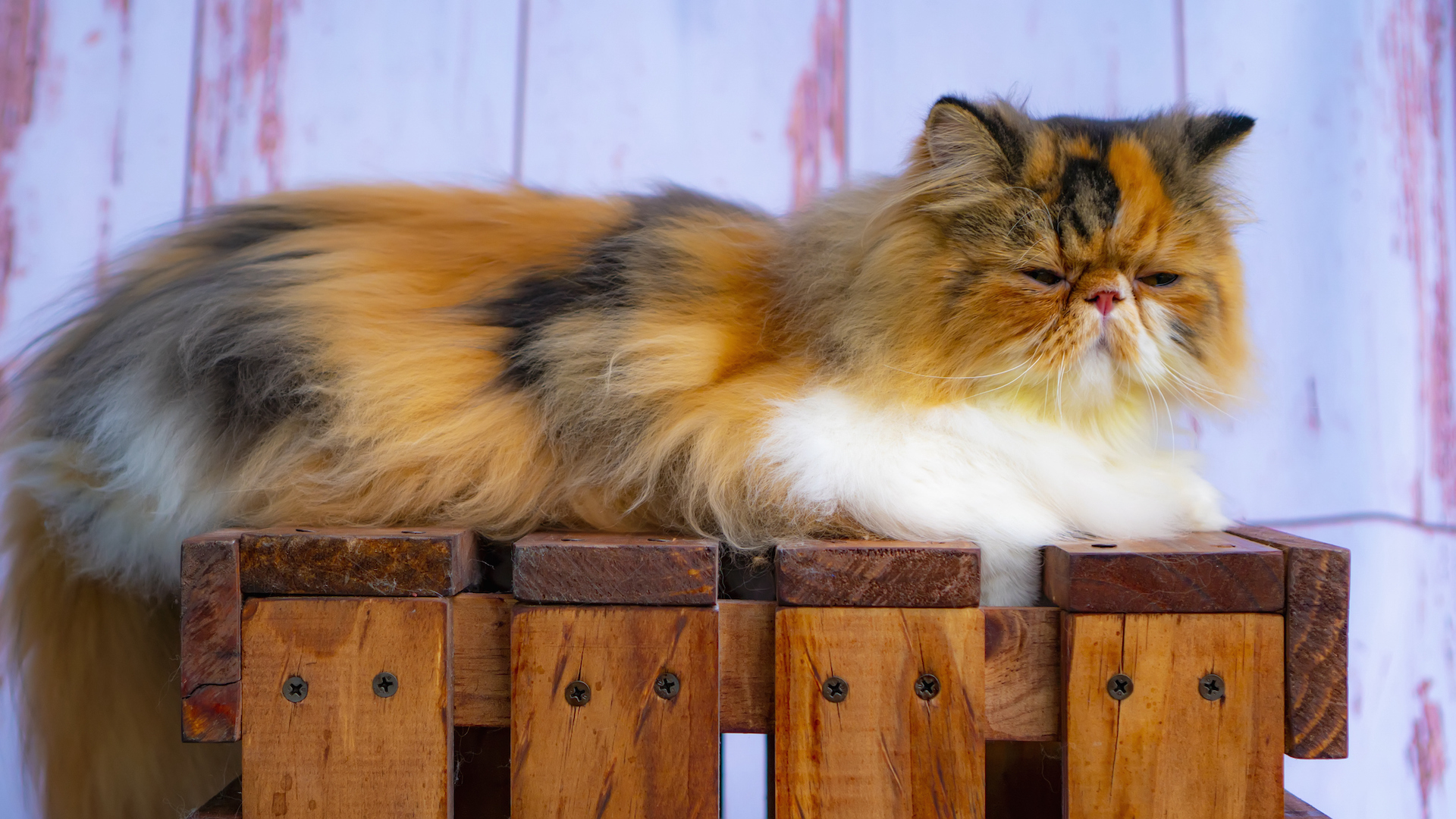
Sweet and gentle in temperament, the Persian is also appealing in looks with its trademark luxuriant coat. Bear in mind that the flat faces of Persian cats mean they have shorter bones in the face and nose, which alter the soft tissue structures and can cause health problems. The teeth, eyes, and respiratory system are most commonly affected.
25. British Shorthair
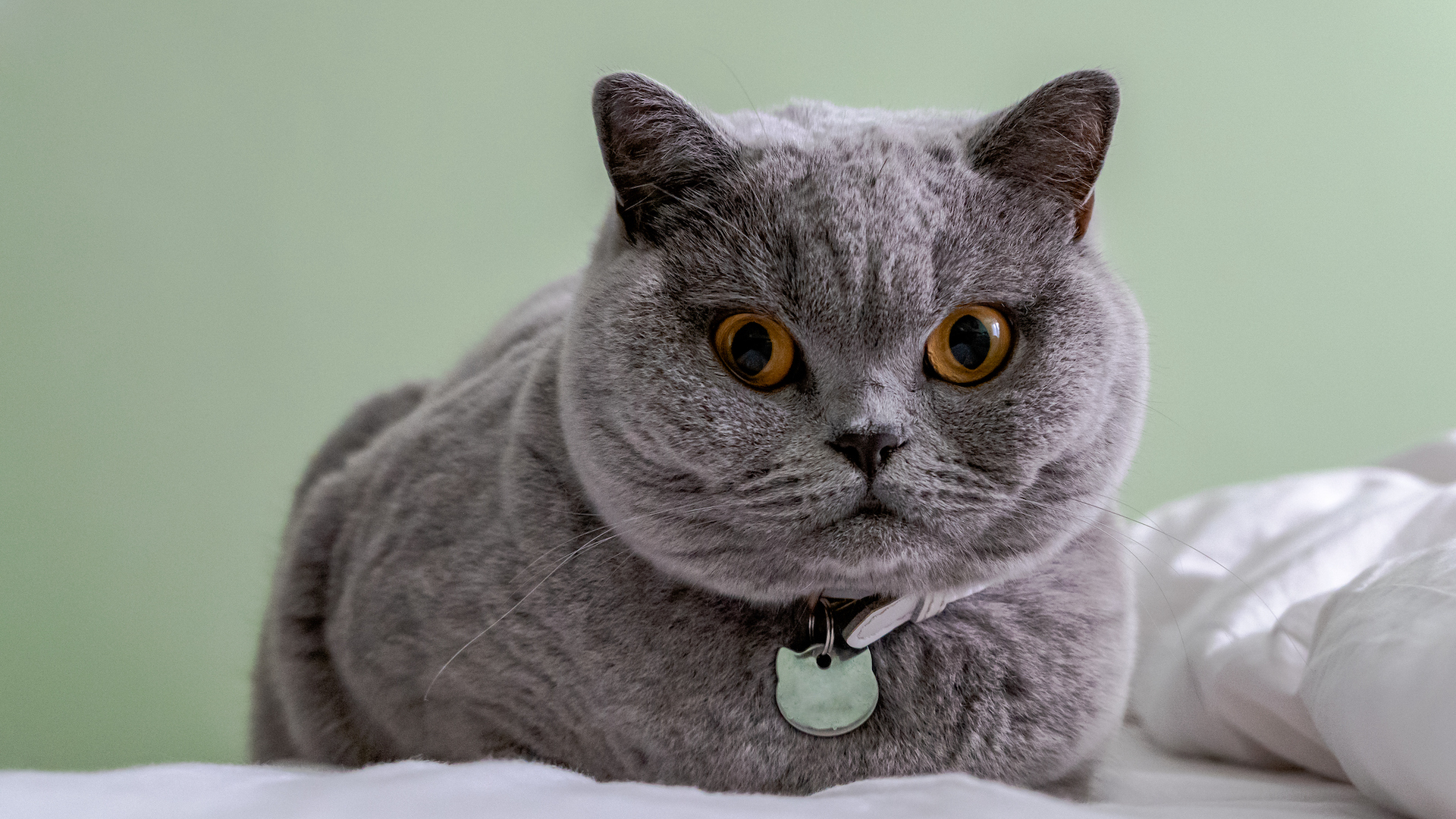
A fabulously distinctive looking feline breed, with its dense typically blue-grey coat, pineapple eyes, and stocky physique are just a few fun facts about British shorthair cats. The head shape of the British shorthair is brachycephalic, however, their breathing is not usually compromised, nor do they tend to suffer eye infections. This is likely due to the fact that their nose is not unduly snubbed, nor do they have short tear ducts.
26. Burmese
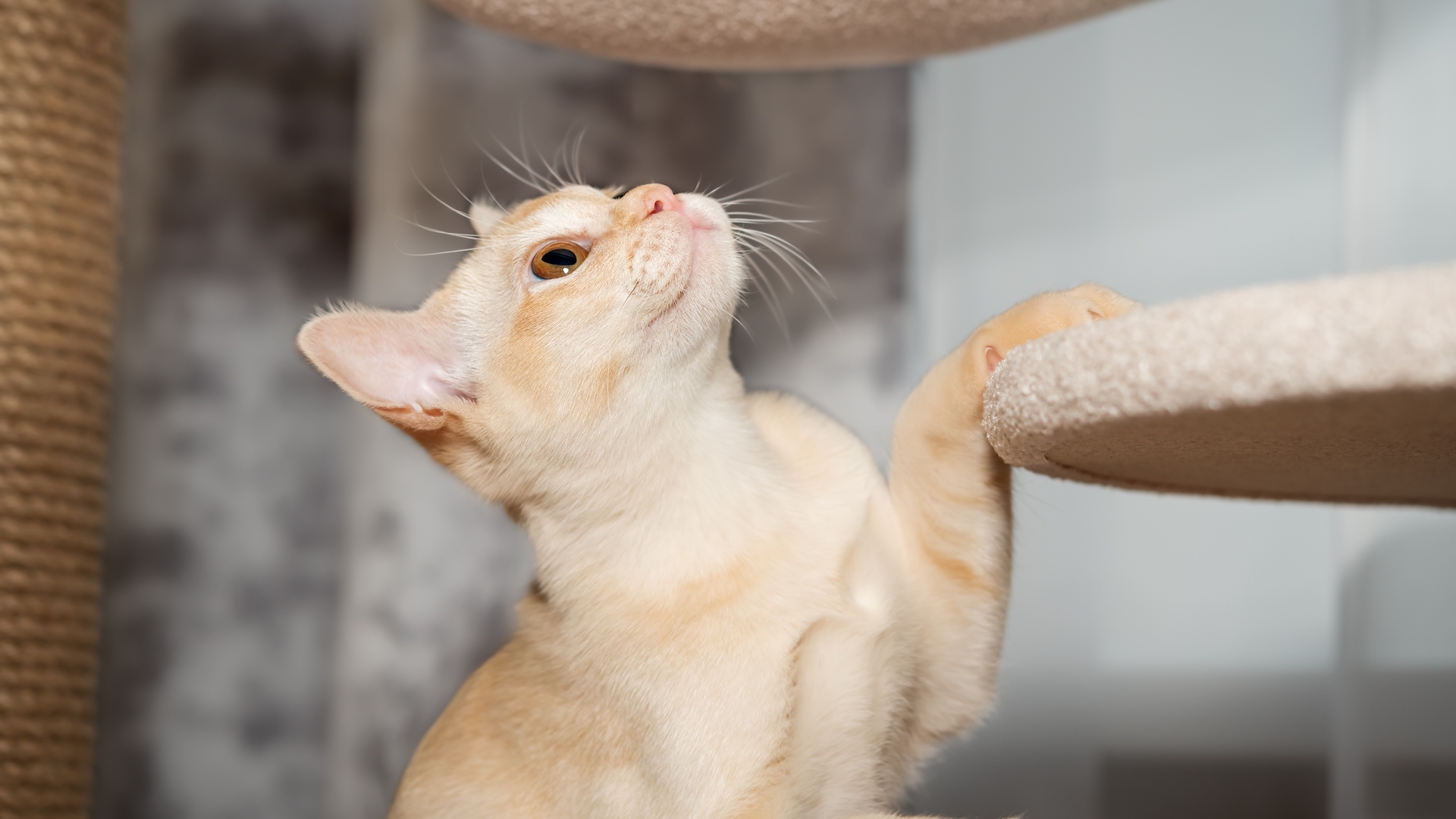
An athletic, energetic, and acrobatic cat, the Burmese is an extrovert. With their large golden eyes, velvet coats, and exotic look, they are a real show-stopper. However, brachycephaly is prevalent in this breed. Not all Burmese cats are brachycephalic – it is linked to a recessive gene. However, if kittens have two mutations of the gene, their facial deformities are severe and incompatible with life, so breeding cats are usually tested.
27. Scottish Fold
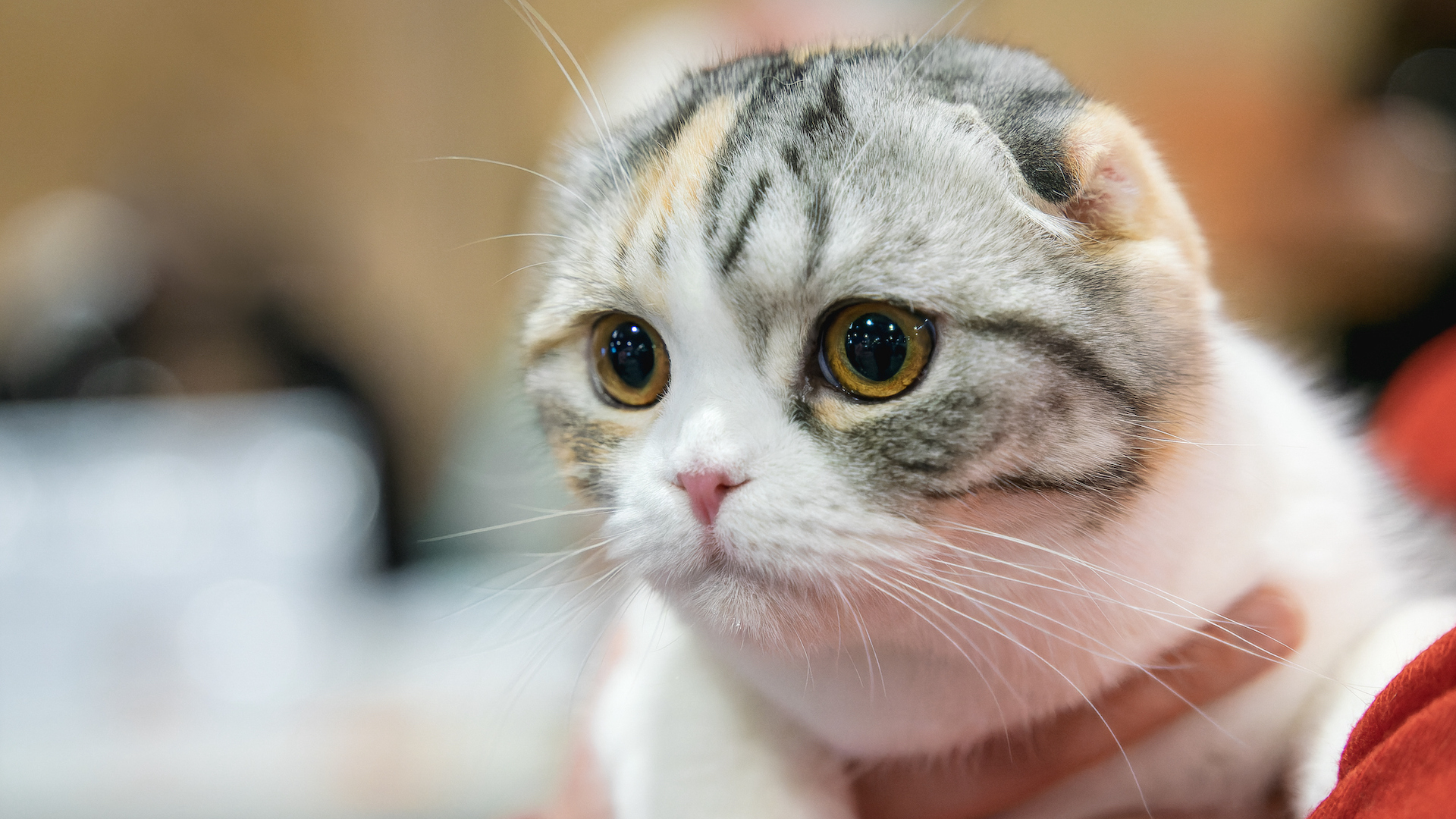
The breeding of Scottish folds, with their owl-like appearance due to the genetic mutation that causes their ears to fold over, is rather controversial. They are also prone to a brachycephalic head shape with a snub nose, although this does not apply to all Scottish folds.
28. Himalayan
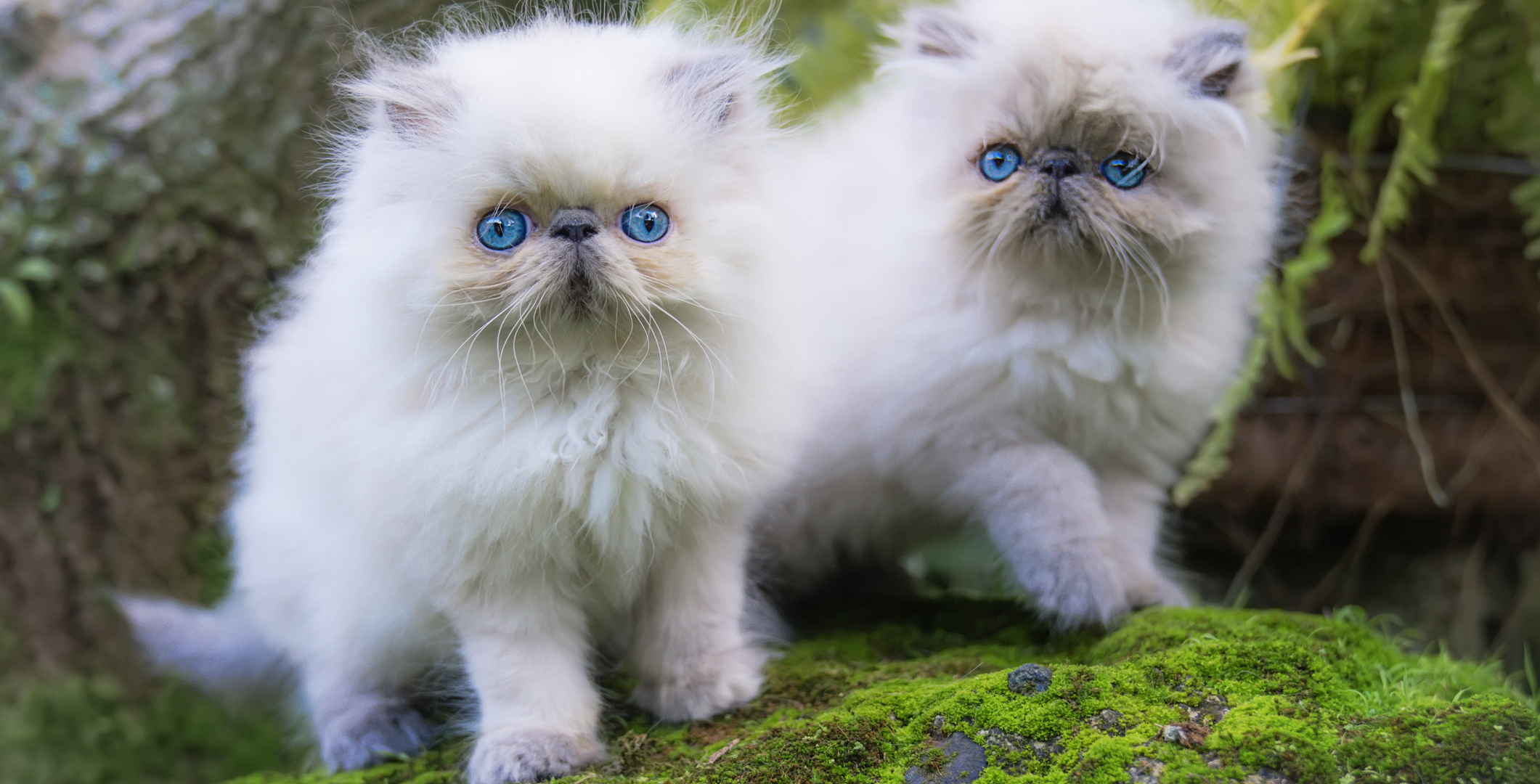
Very similar in looks to the Persian cat, with its glamorous plush coat, the Himalayan is likewise a brachycephalic breed. Its piercing blue eyes and color-point coat make it fabulously striking, however they may suffer from breathing issues due to their squashed facial structures.
29. Exotic Shorthair
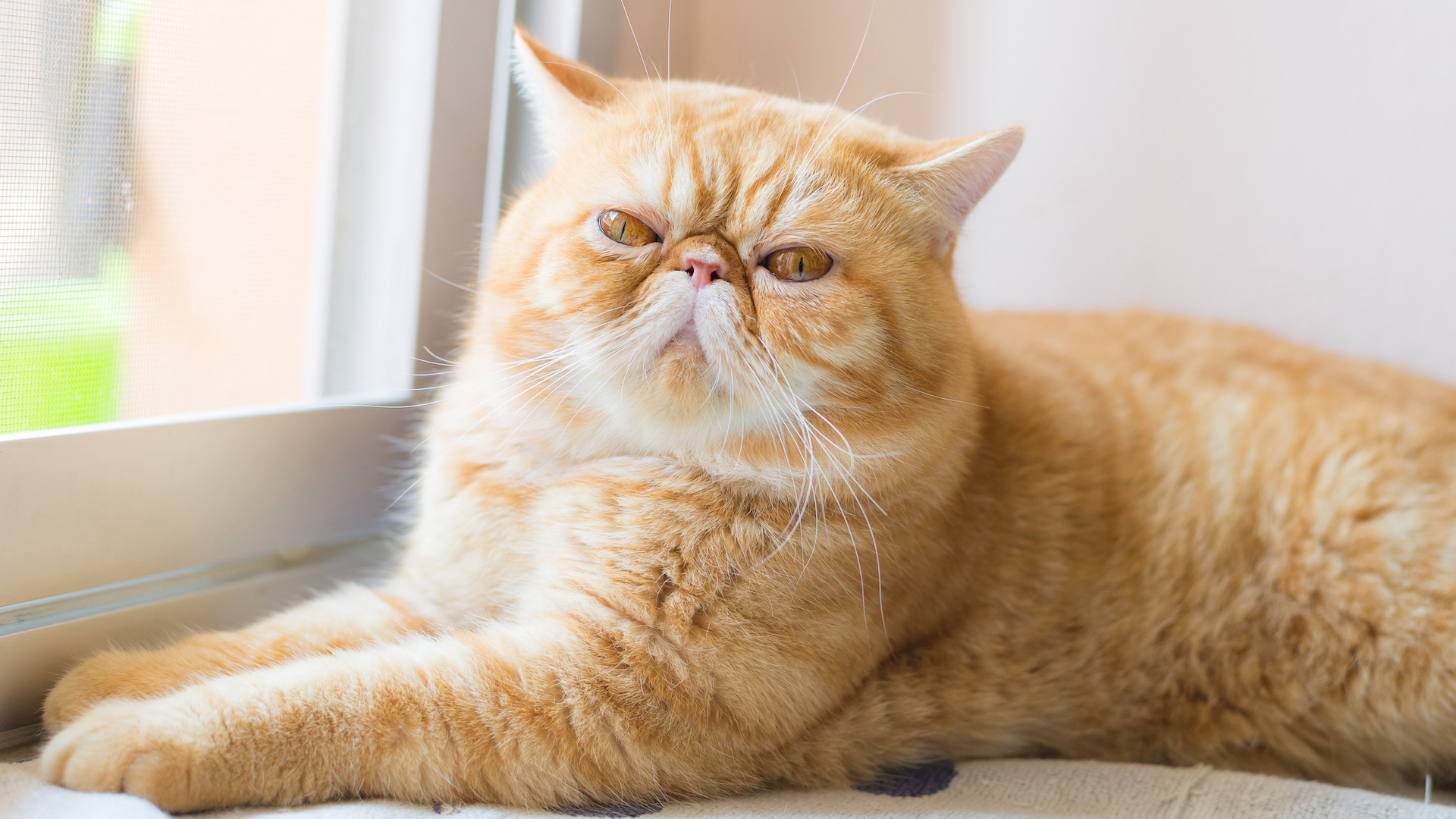
The exotic shorthair is essentially a short-haired version of the Persian cat. They have a similarly smooshy face and placid temperament and are equally prone to suffering breathing difficulties due to their shortened facial structures. Happily for them, they don’t crave masses of exercise which would put pressure on their respiratory system, but they do enjoy playtime.
30. Netherland Dwarf rabbit
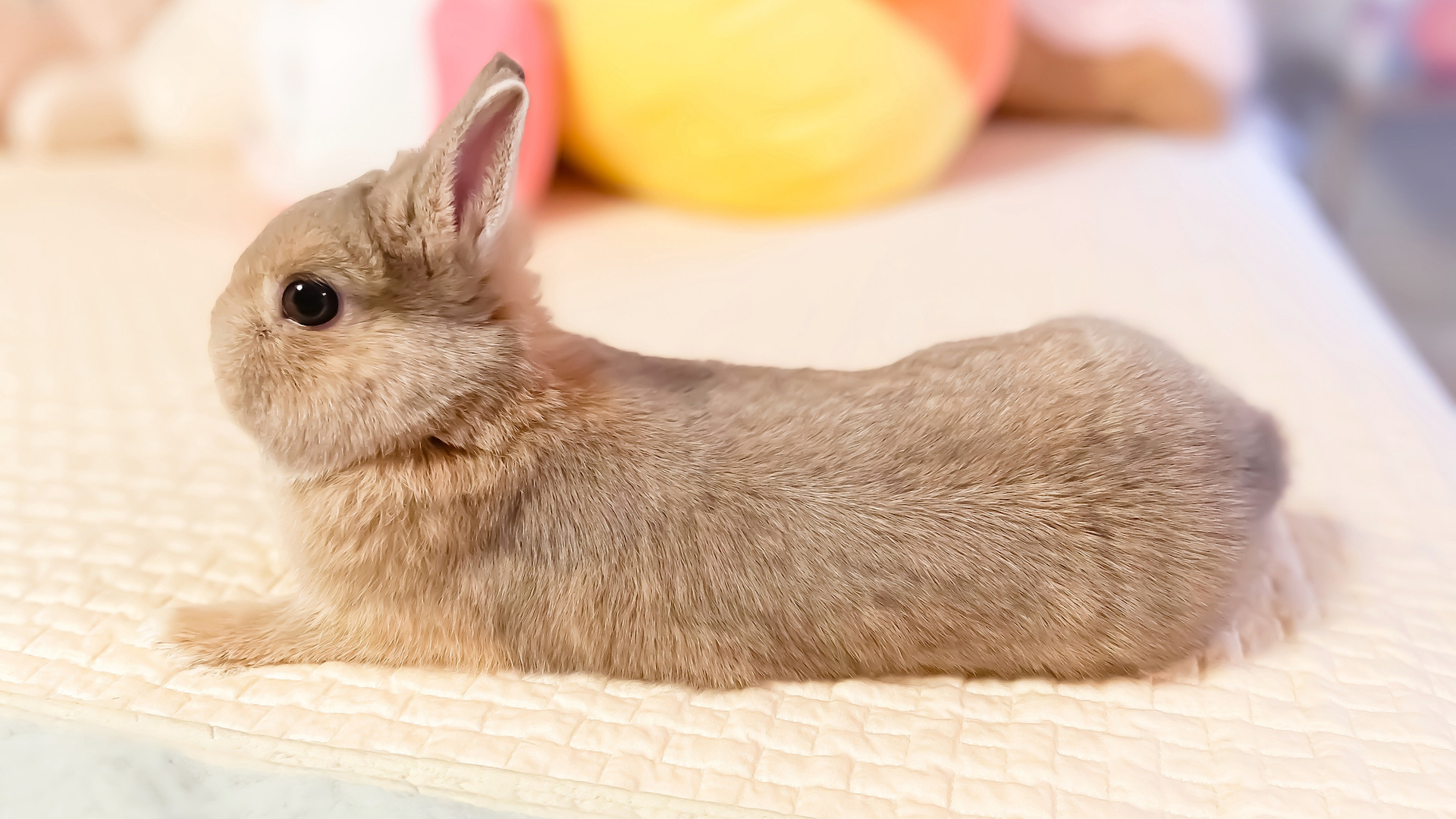
This mini rabbit originated in, you guessed it, the Netherlands. They are characteristically sassy, energetic, and feisty – so while they might look adorable for kids, they’re not as cuddly as their appearance might suggest! They typically weigh less than 2.5lb and have a compact body, short neck, and broad head with a round face. It’s certainly a cute little bunny but this brachycephalic head shape can cause dental and respiratory issues.
31. Lops (miniature, dwarf and French)
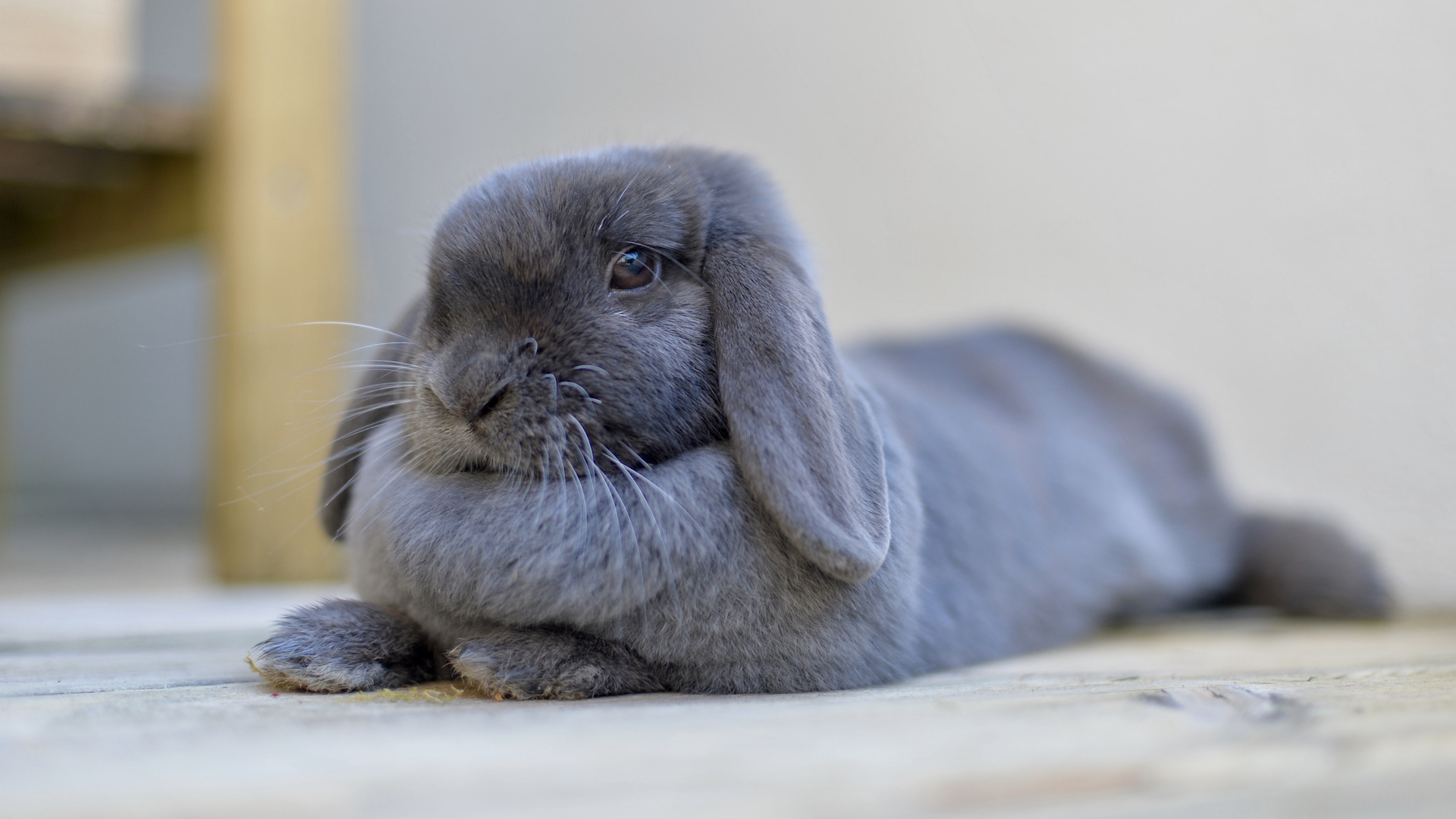
Lop-eared bunnies are floppy, fluffy, and adorable, but the squashed facial structures that make them look so cute can seriously compromise their health – causing dental problems, eye infections, and breathing difficulties. A study on lop-eared rabbits by the Cold Spring Harbor Laboratory has concluded they are at an increased risk of various welfare issues due to their conformation.
32. Lionhead rabbit
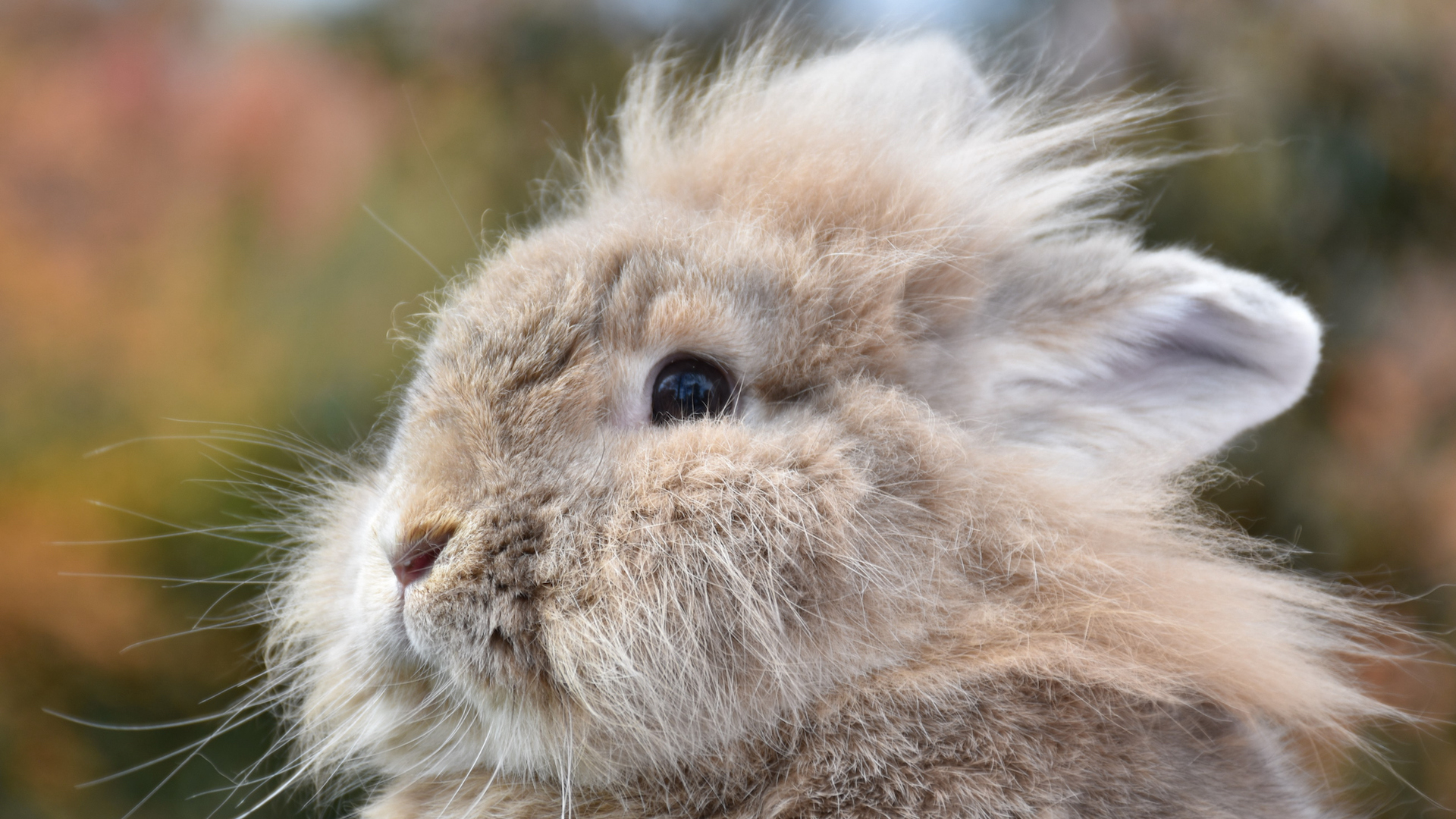
Lionhead rabbits are plush and sweet as a teddy bear. Typically fairly small, with a floofy mane, they tend to have delightfully gentle and affectionate temperaments. However, they are considered a brachycephalic breed, with those cute button noses having an impact on their respiratory system and teeth.
